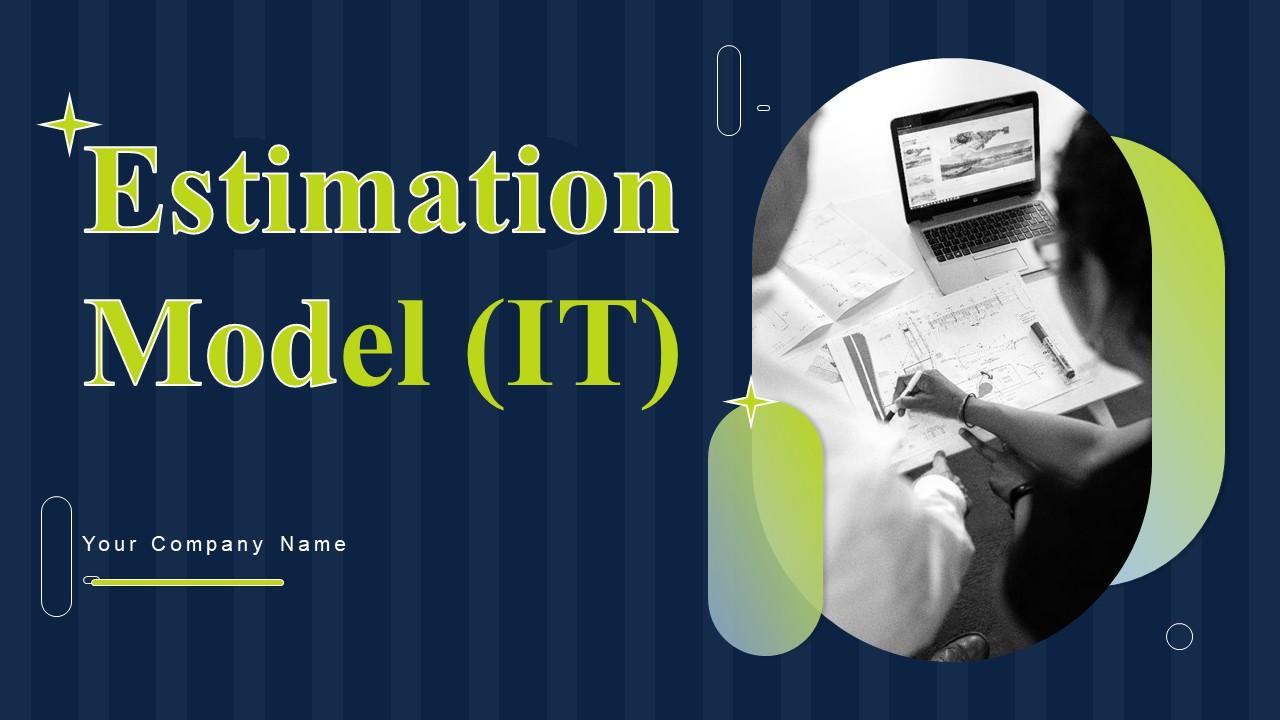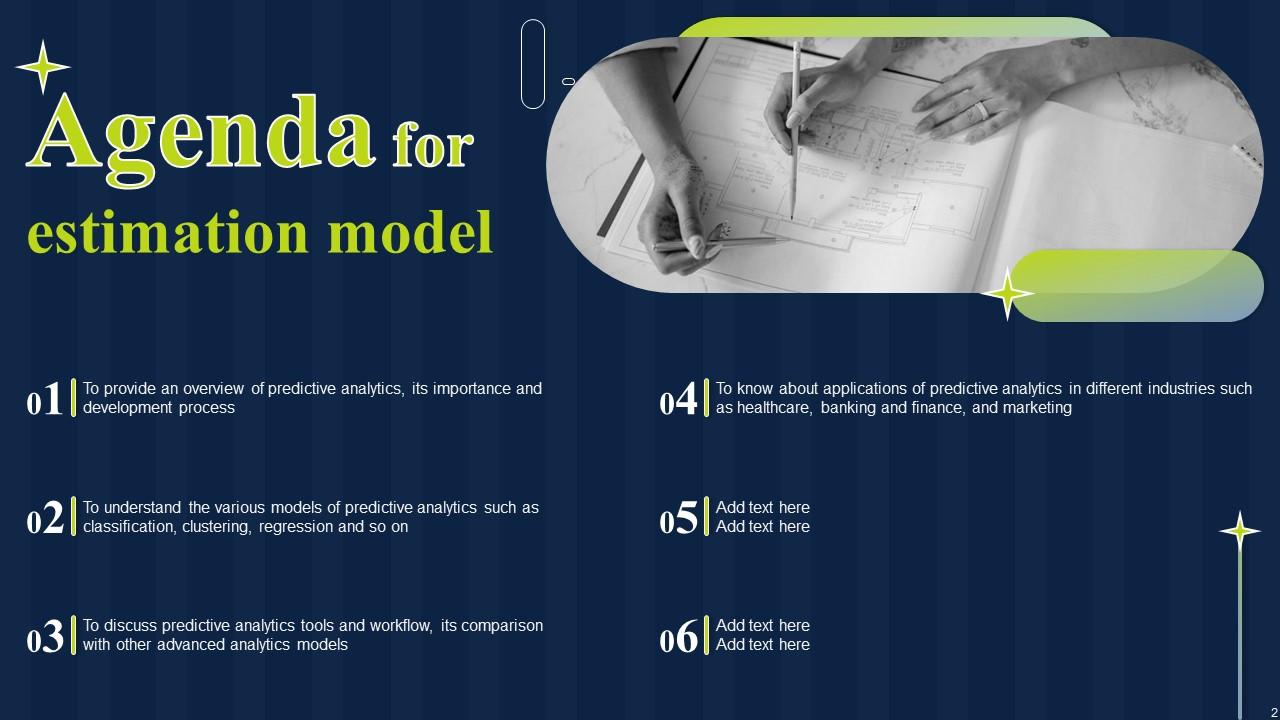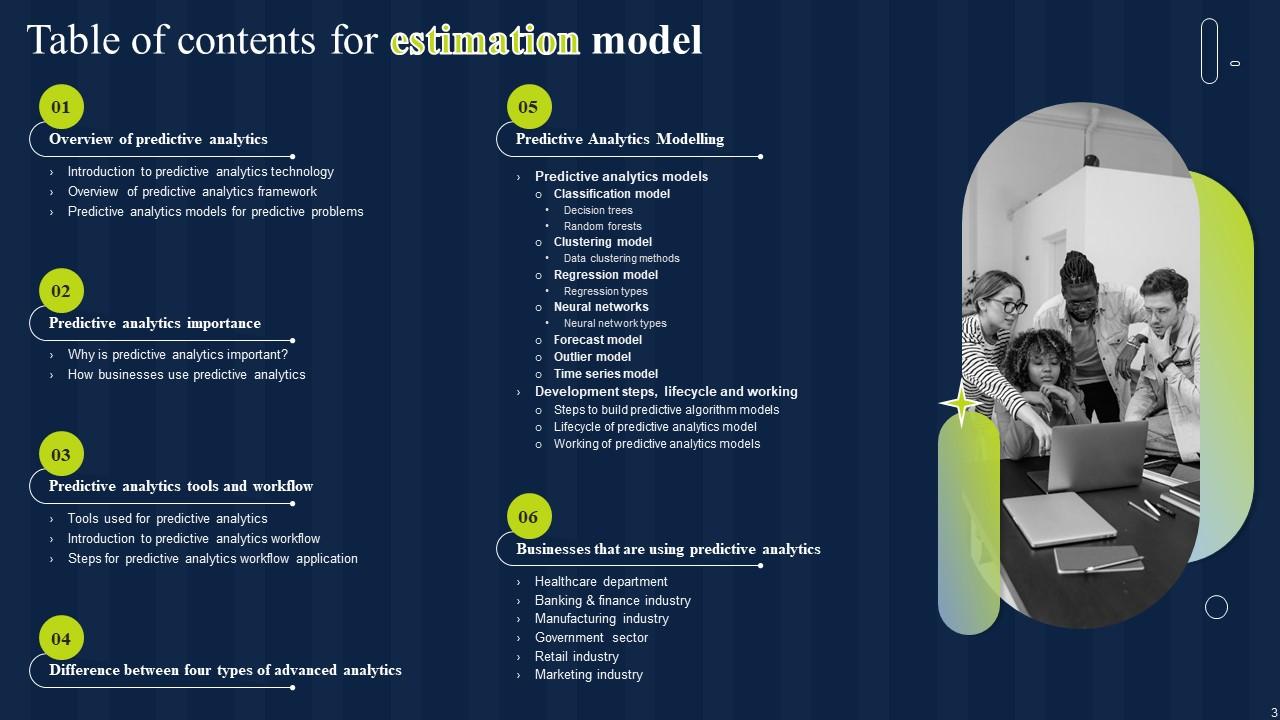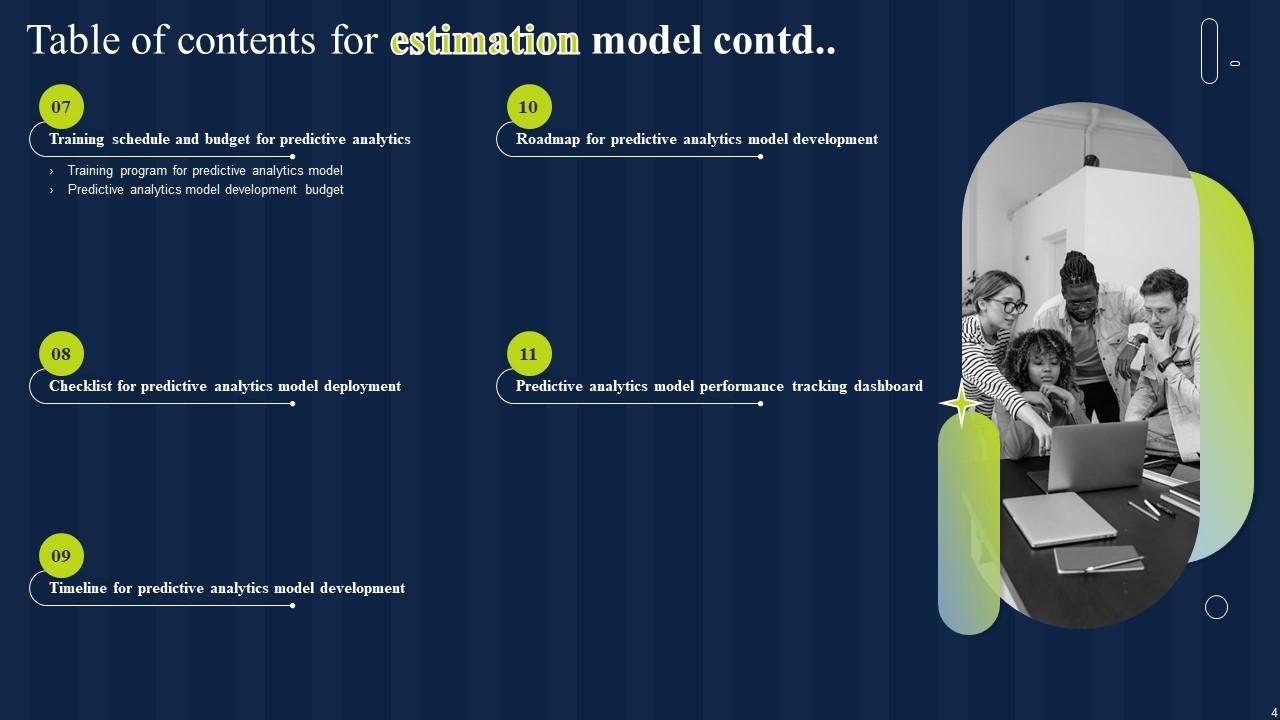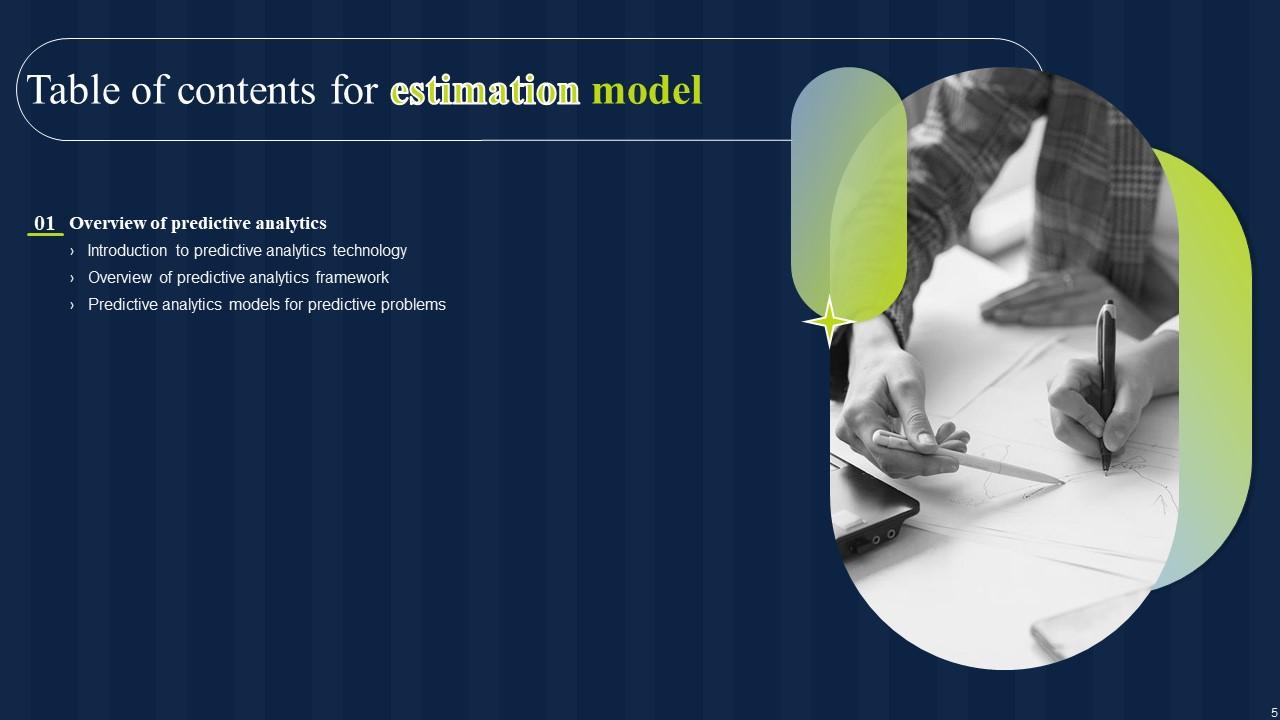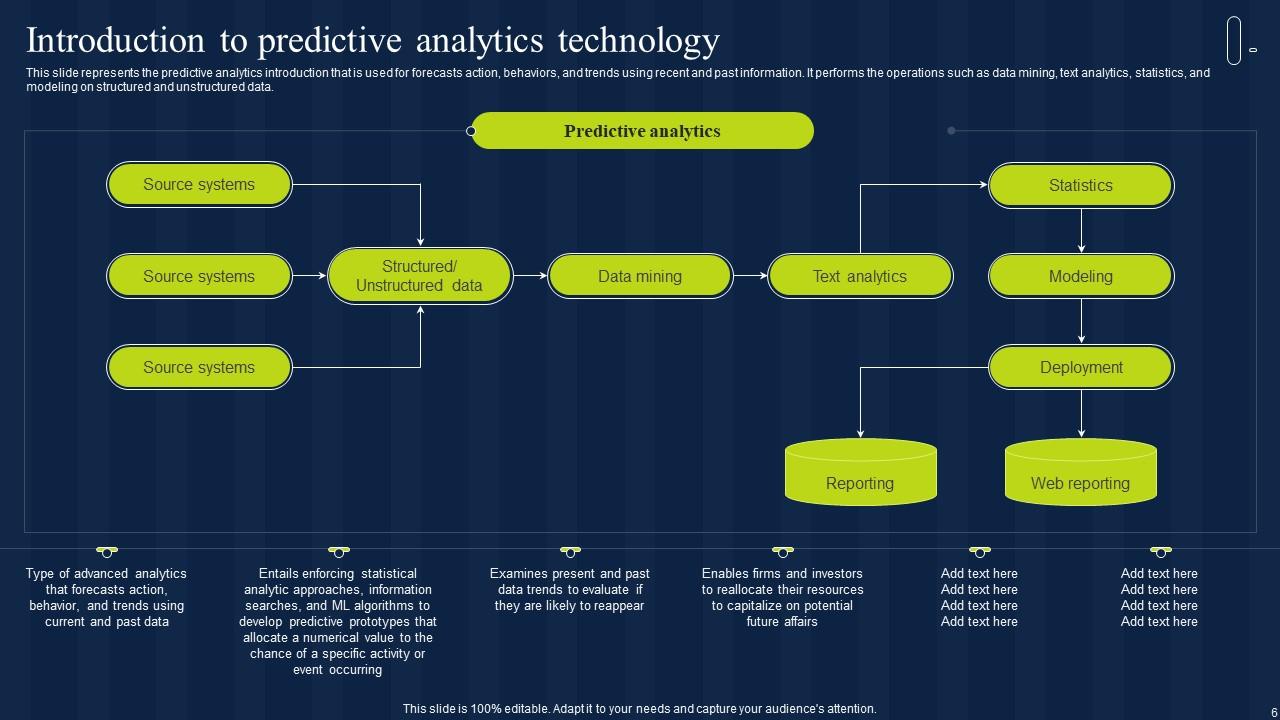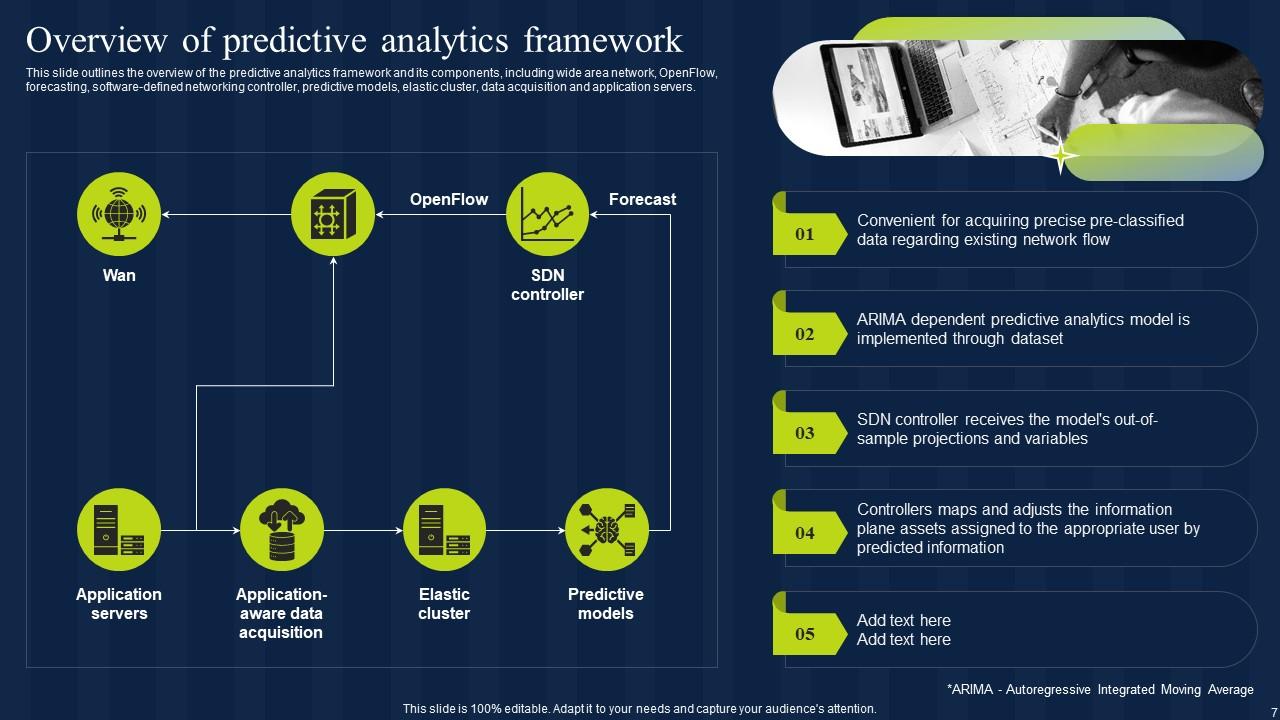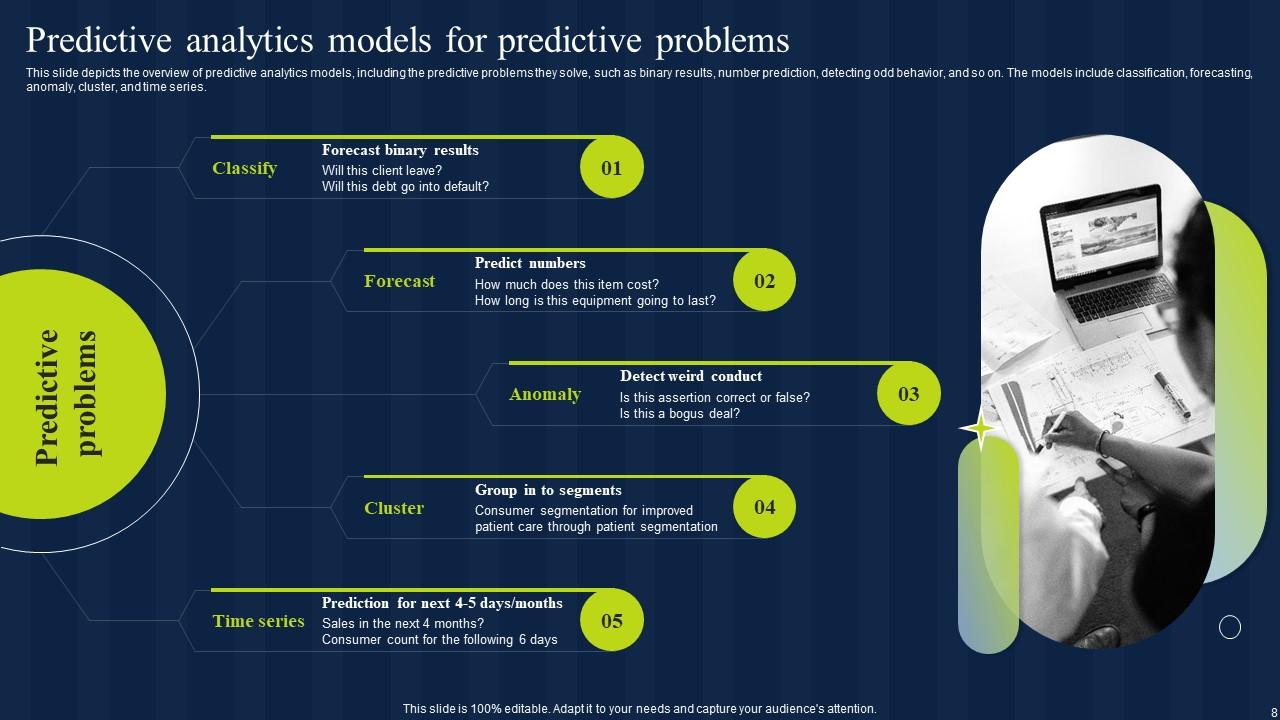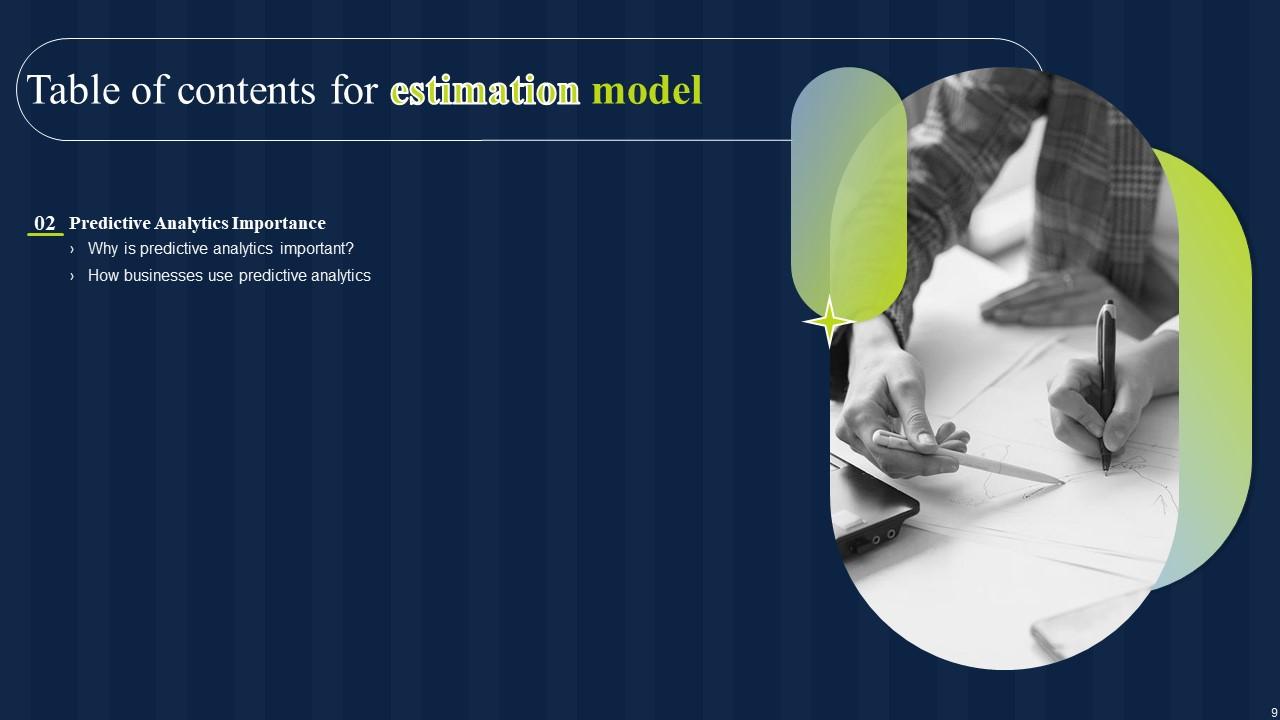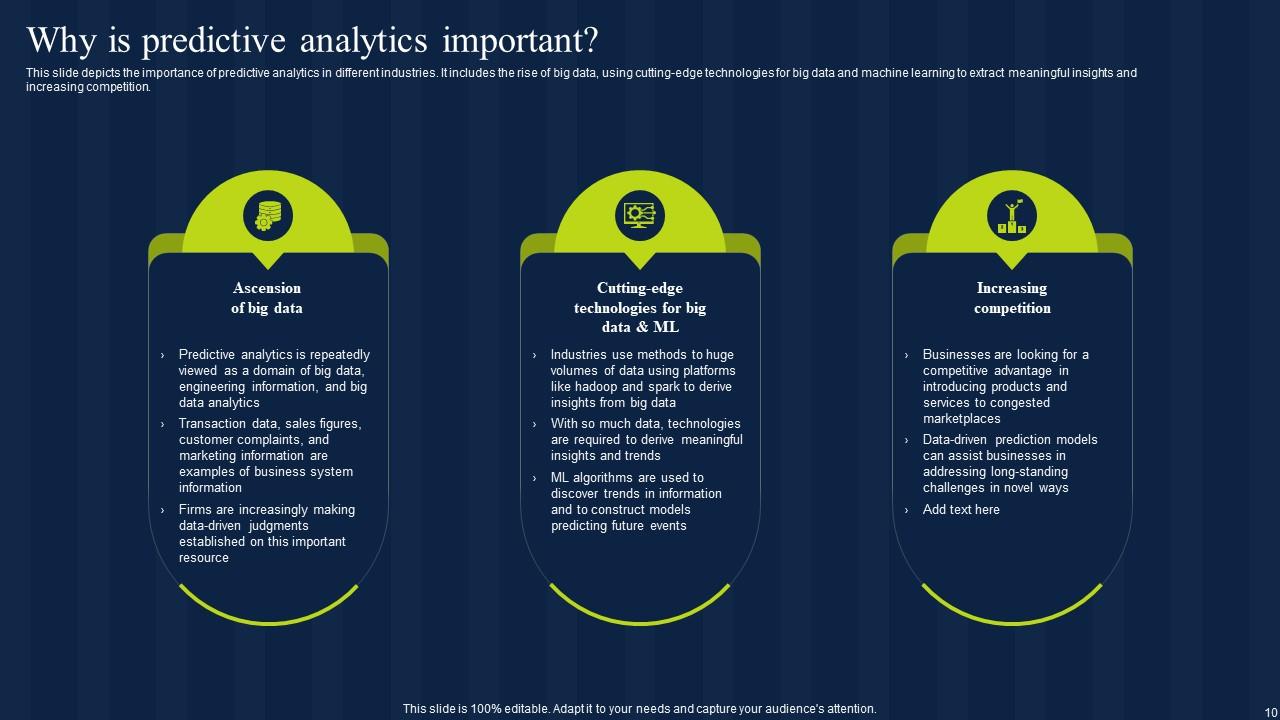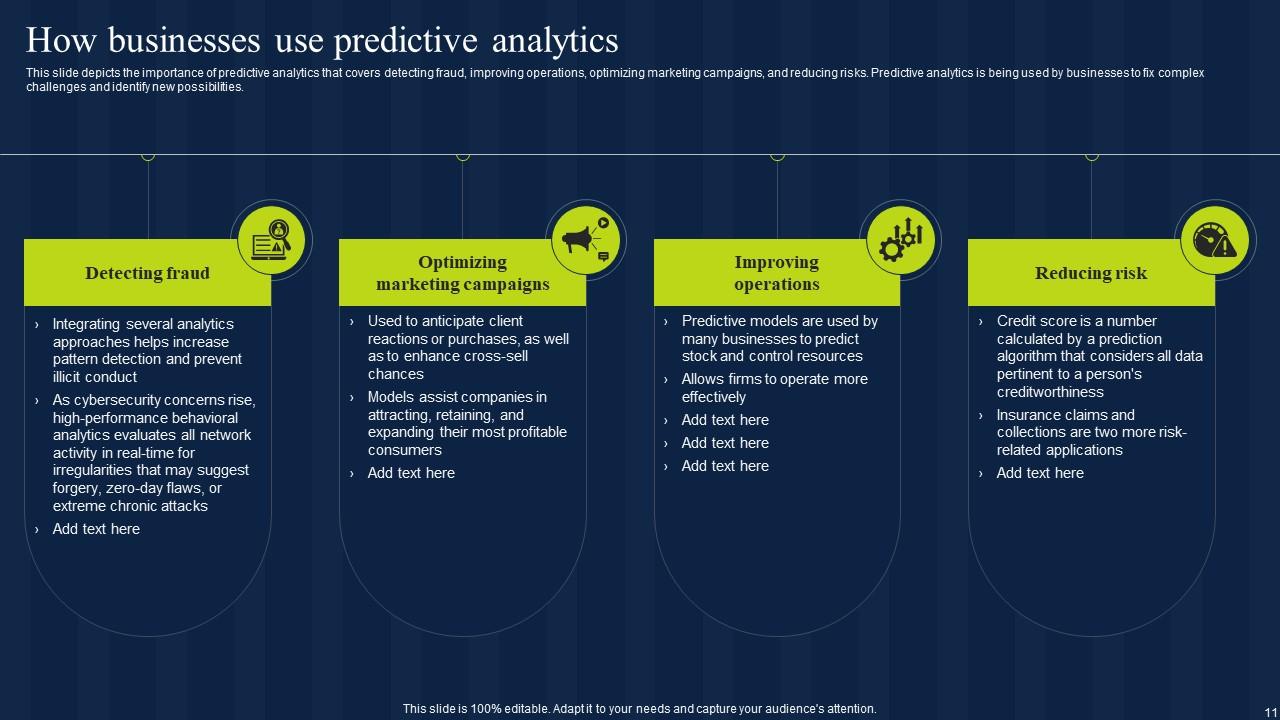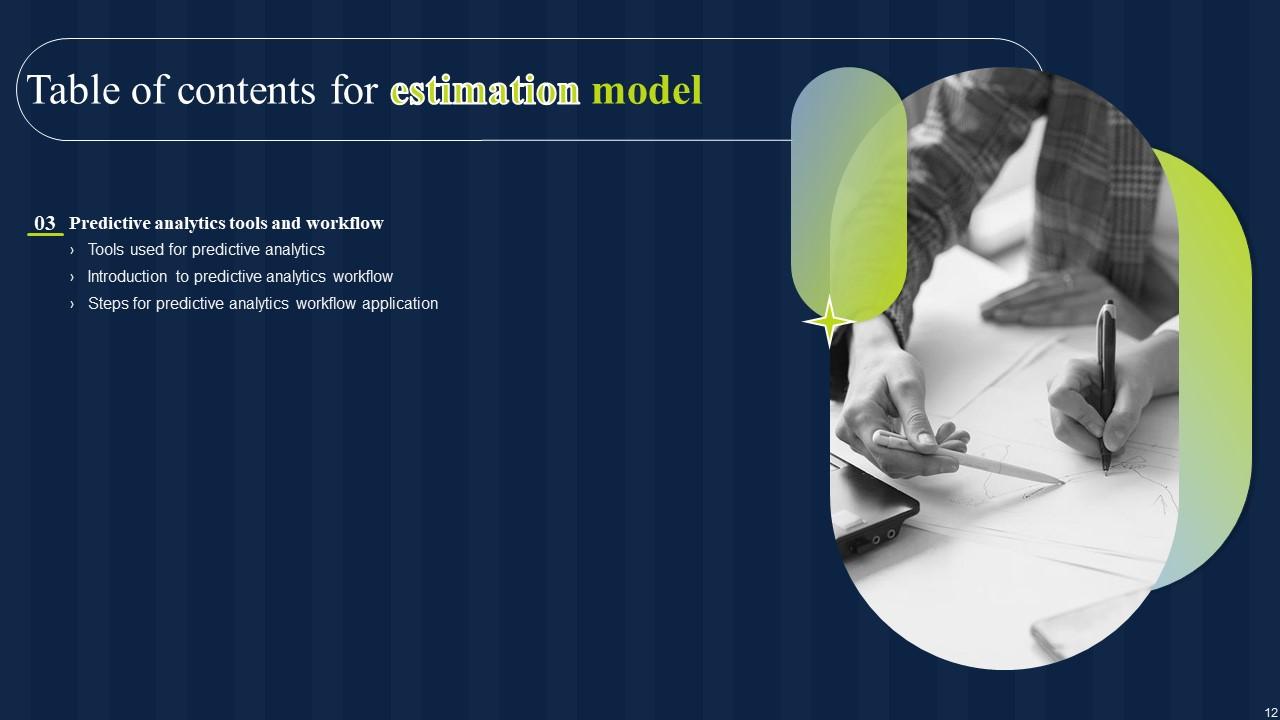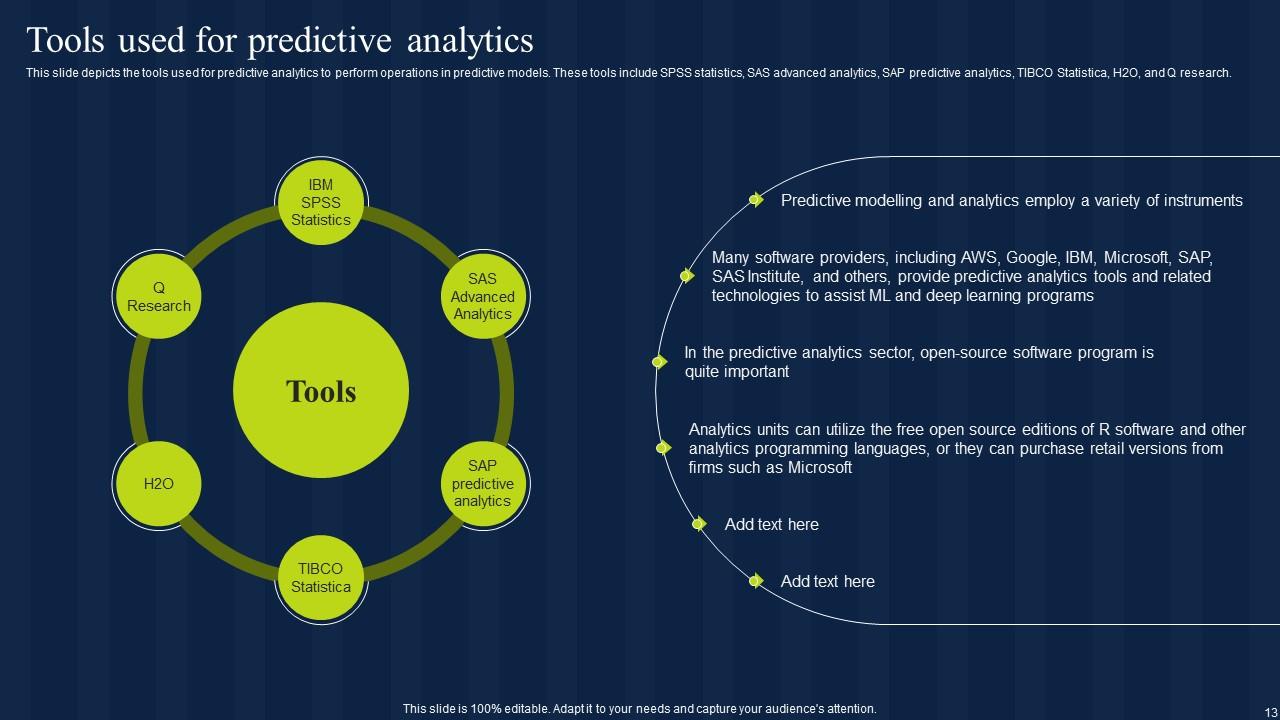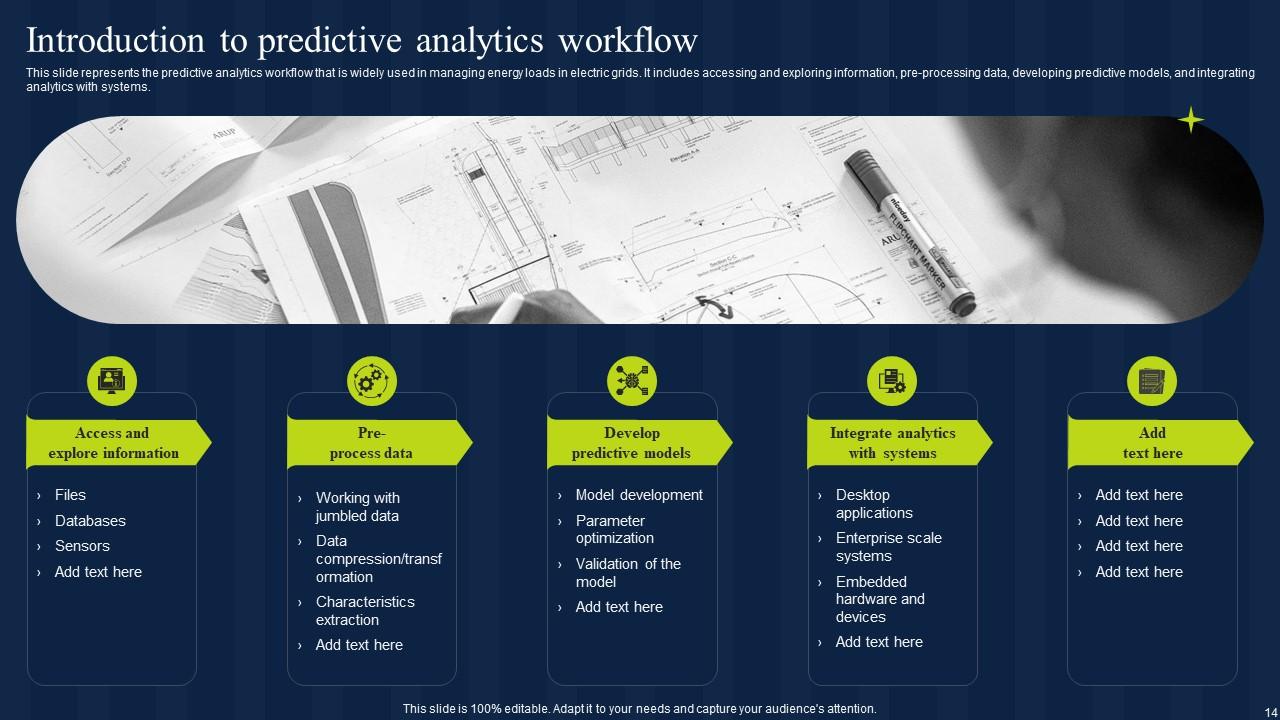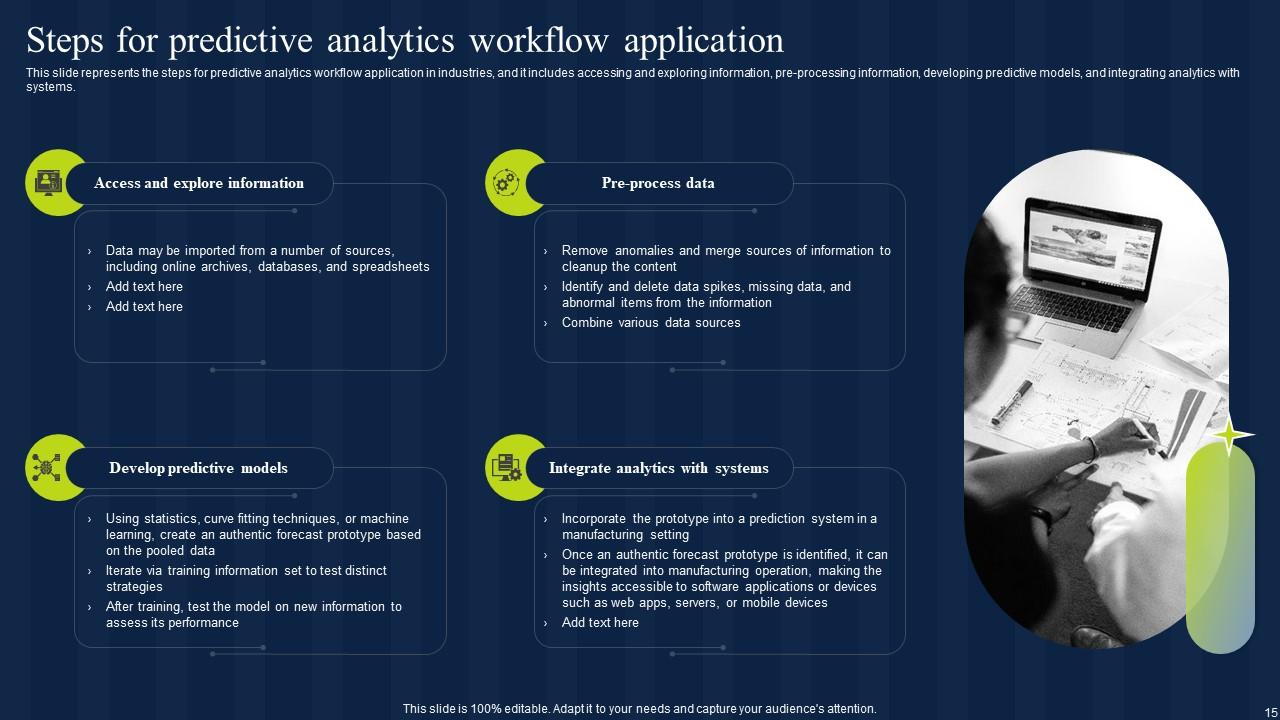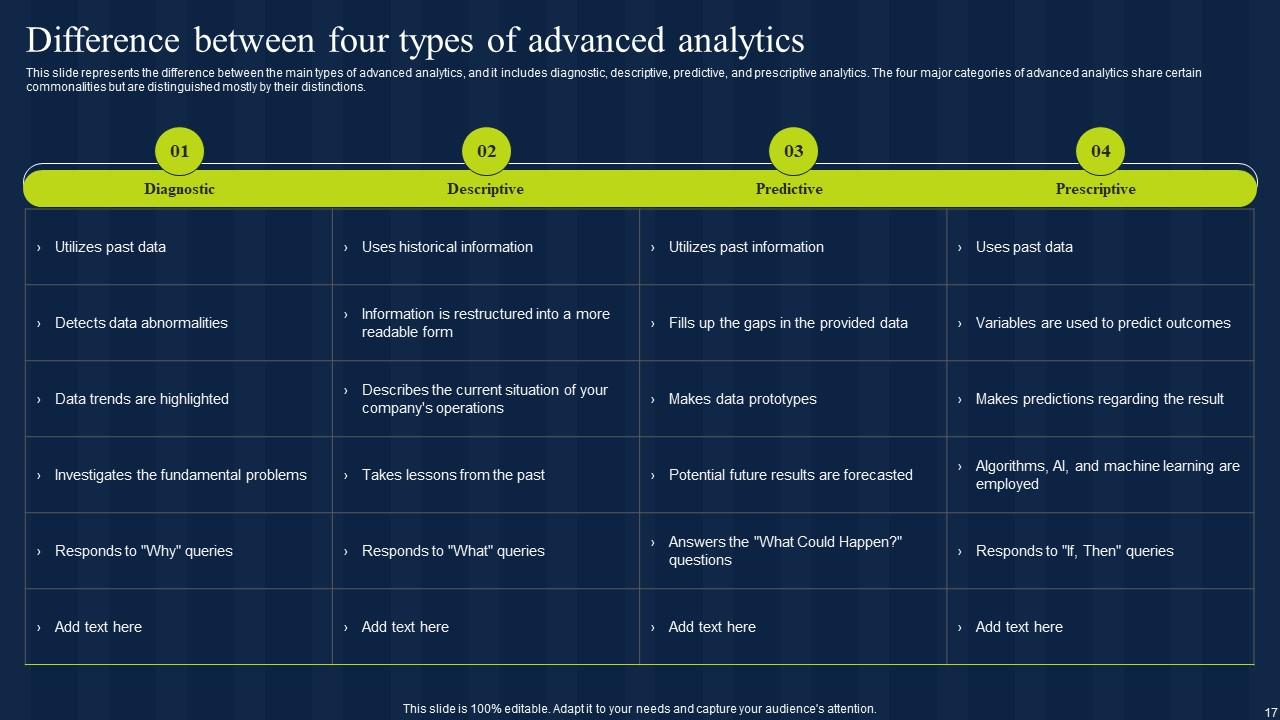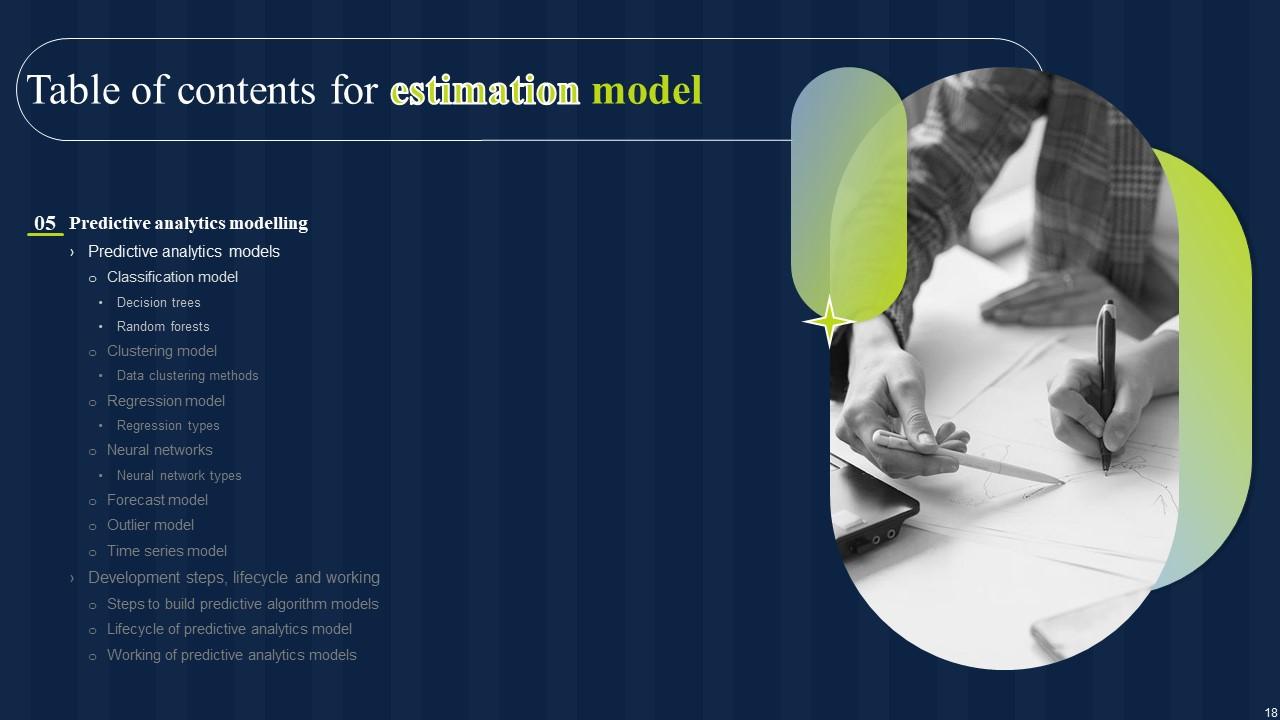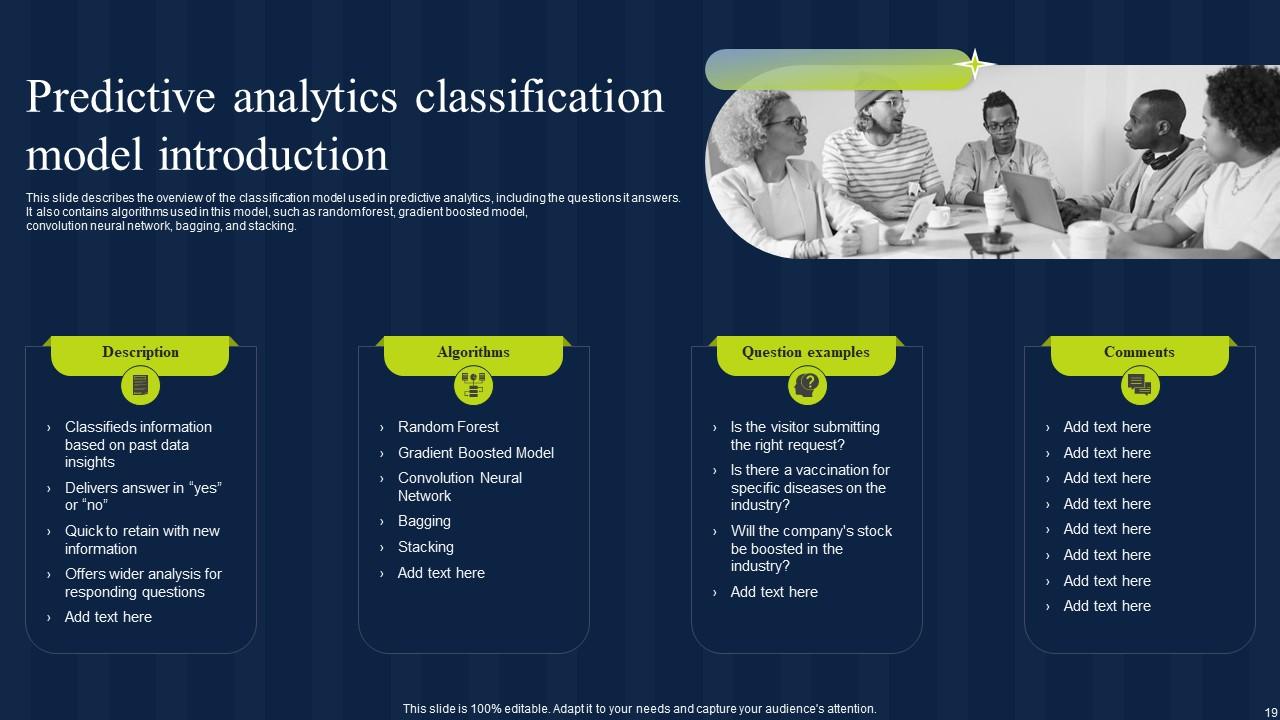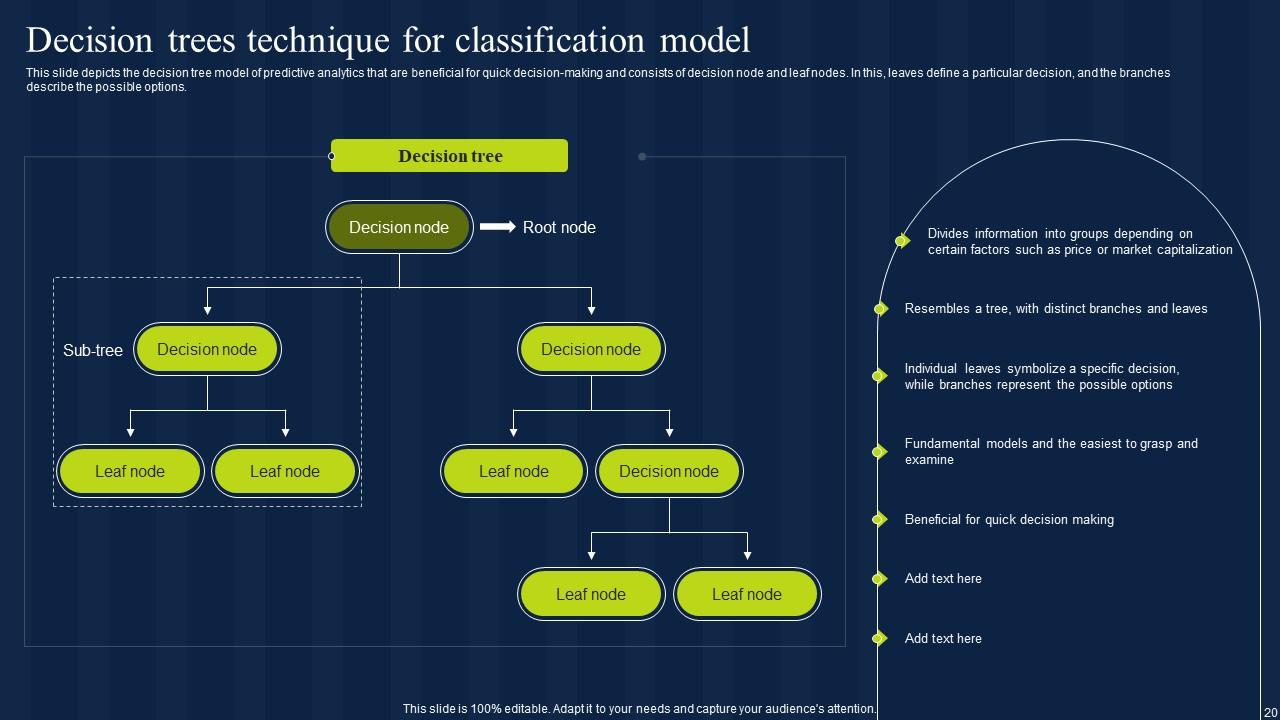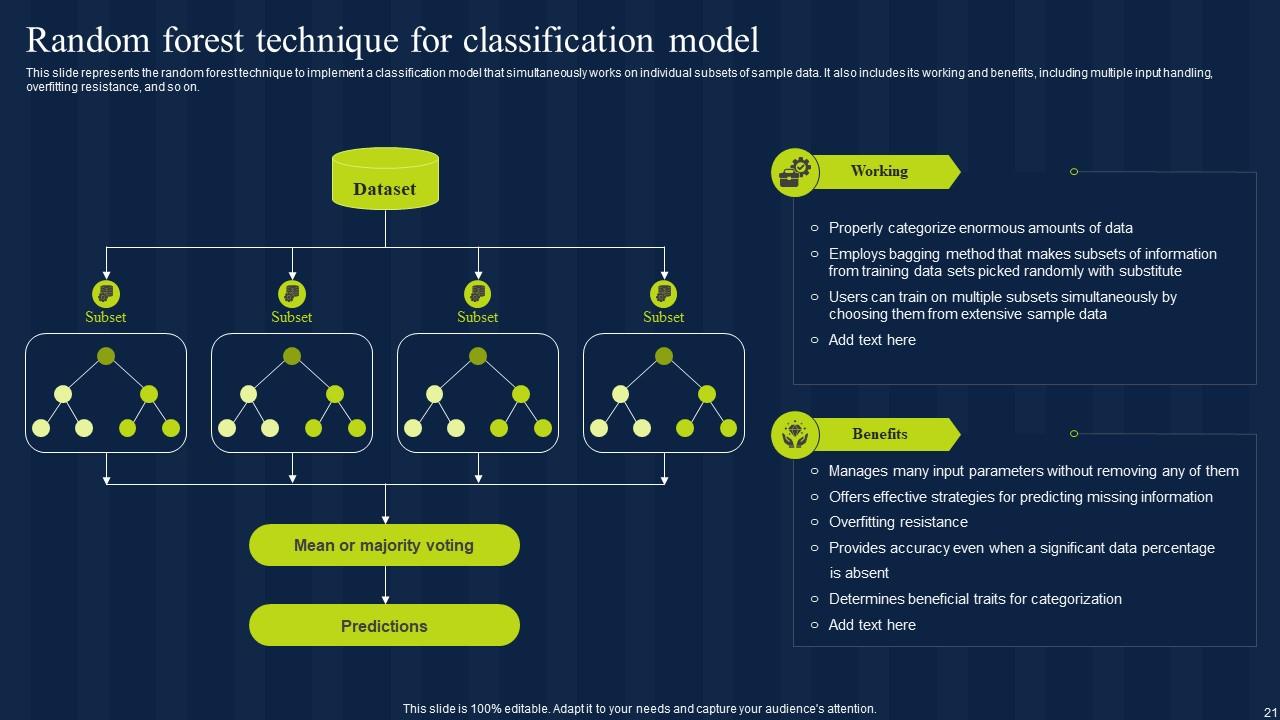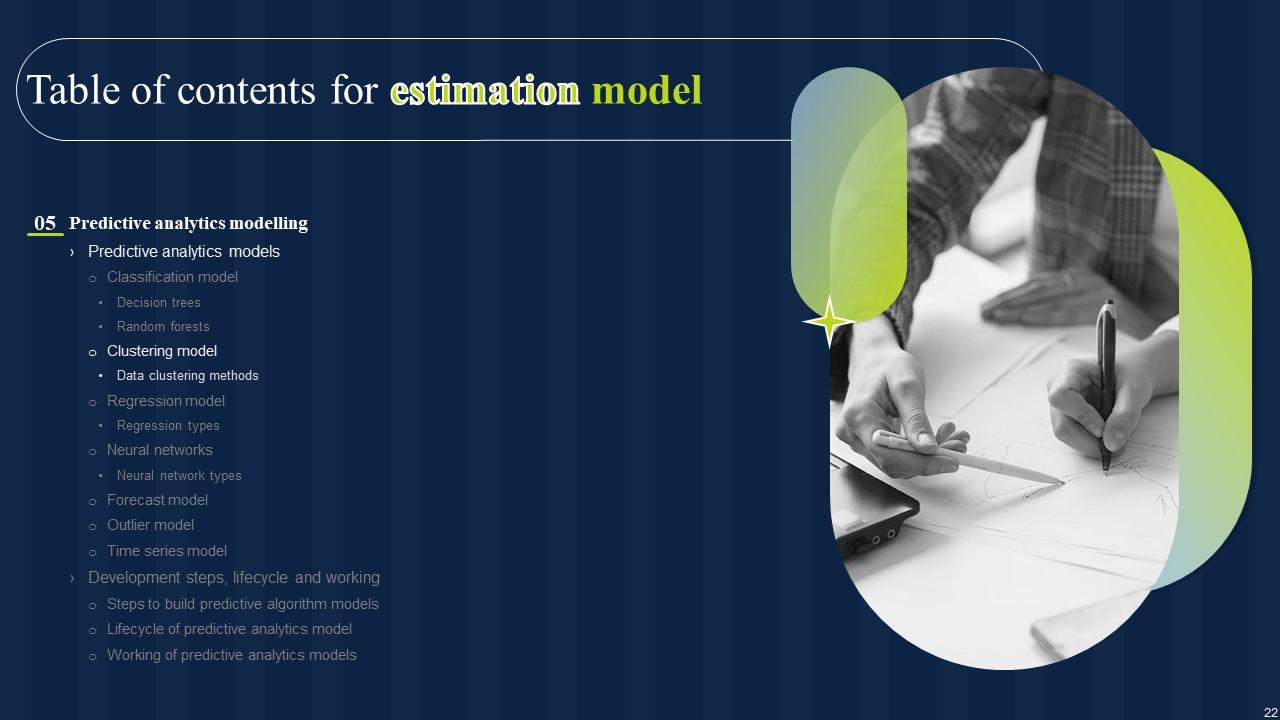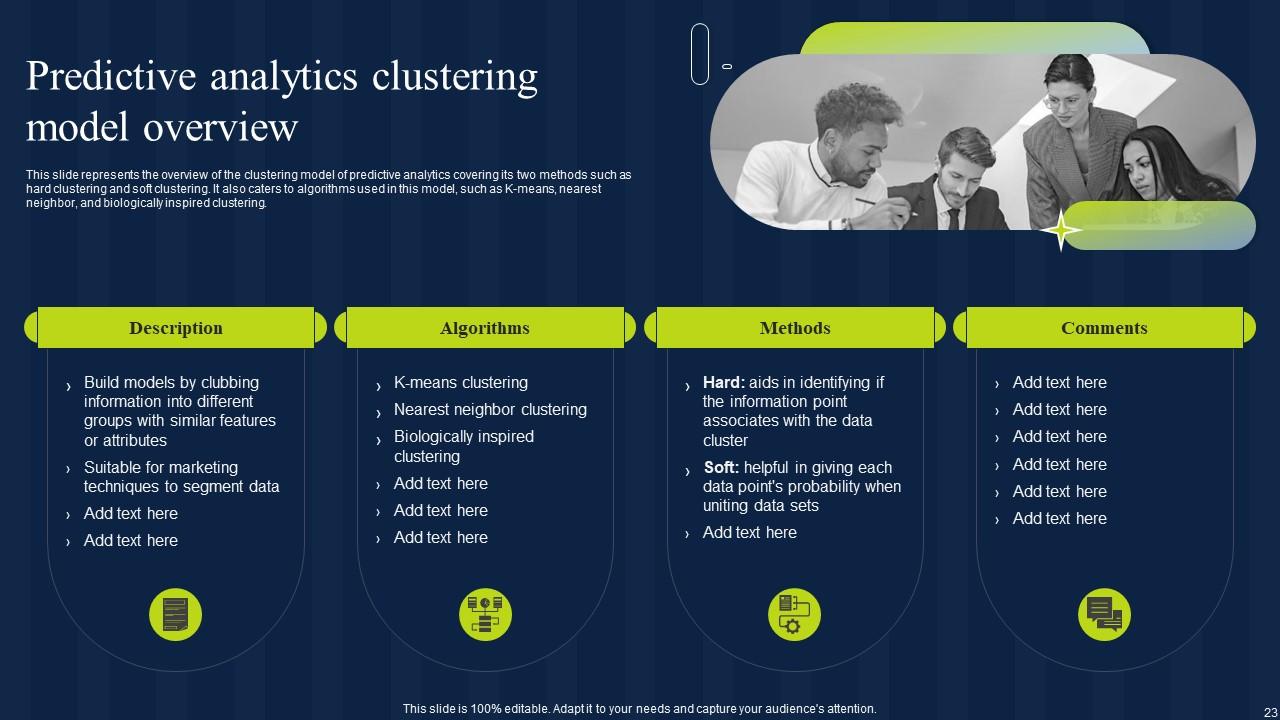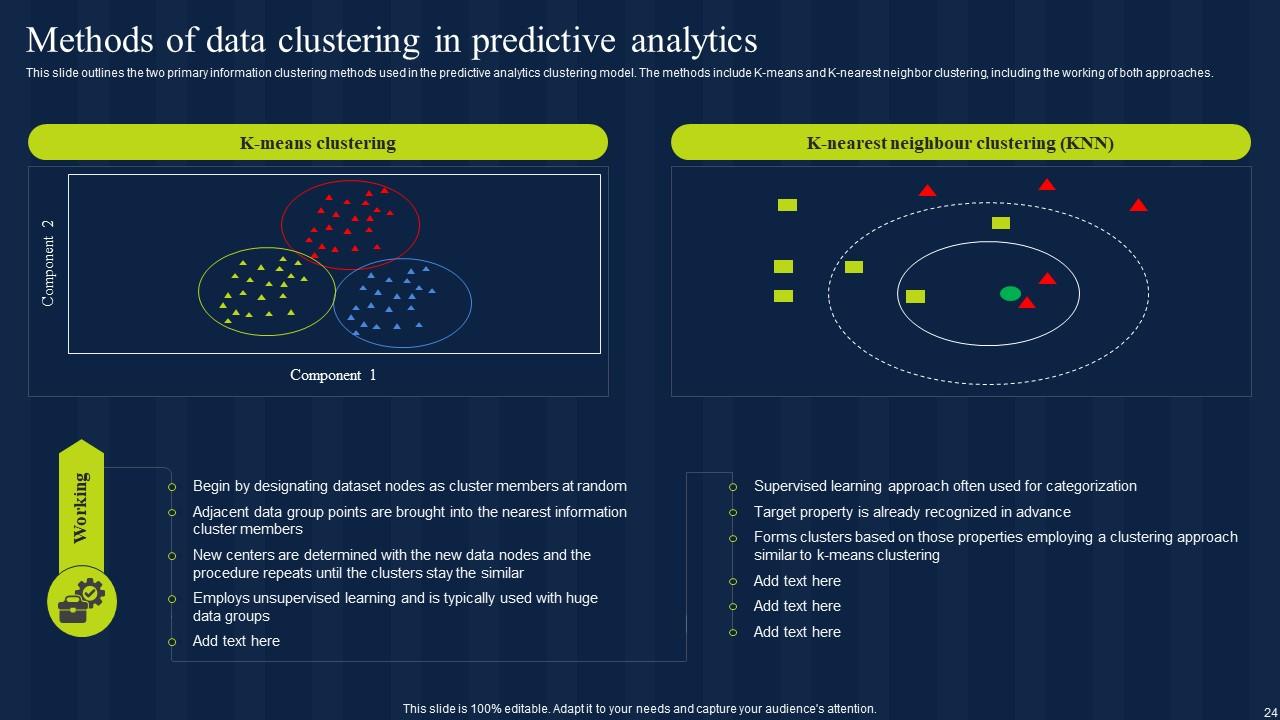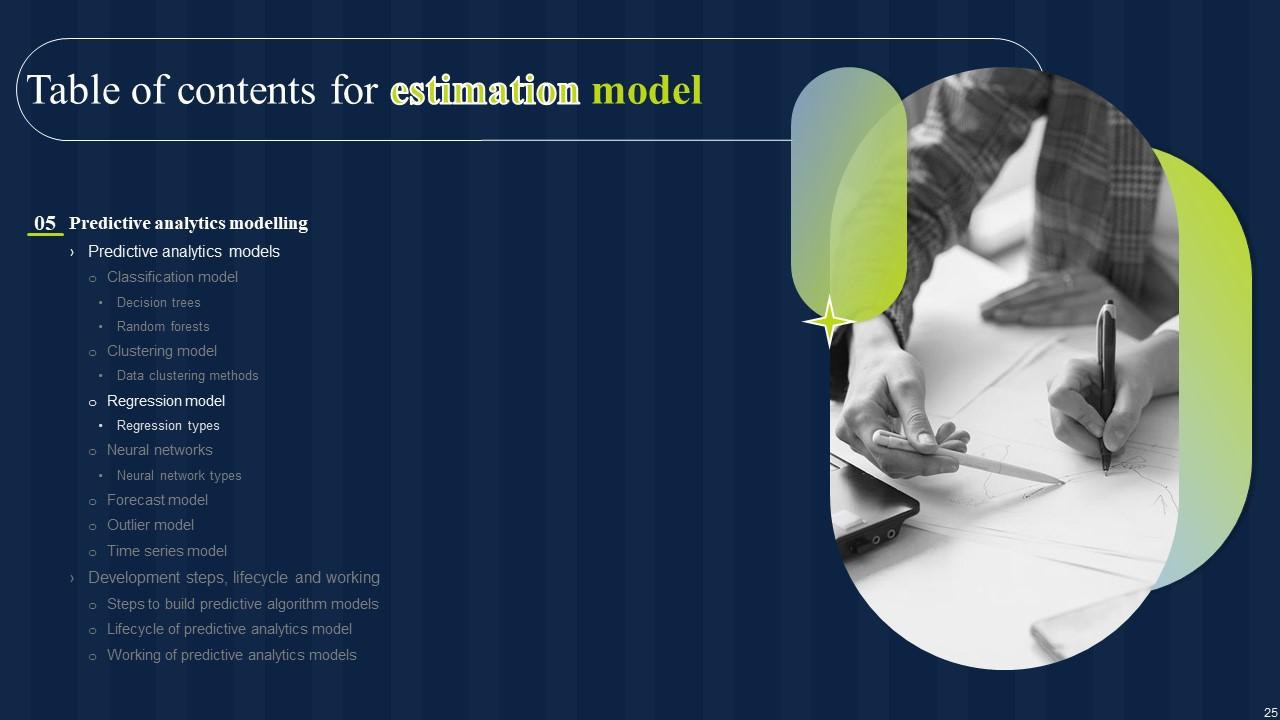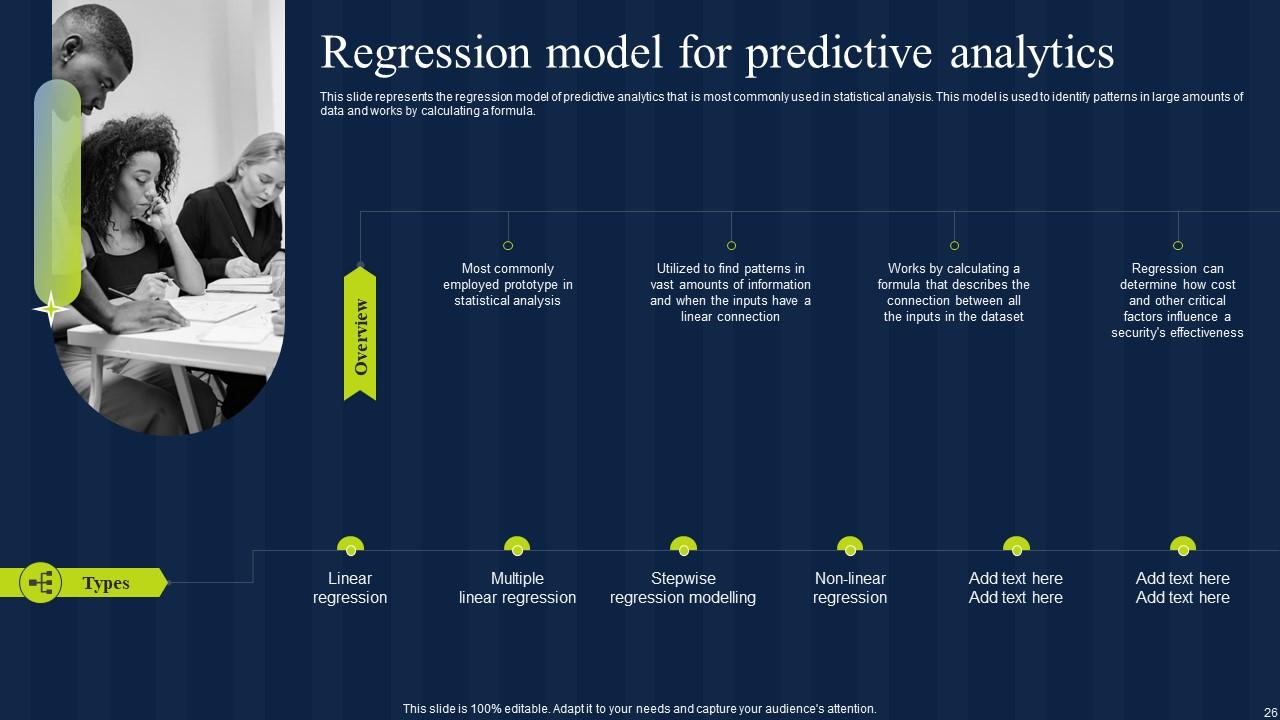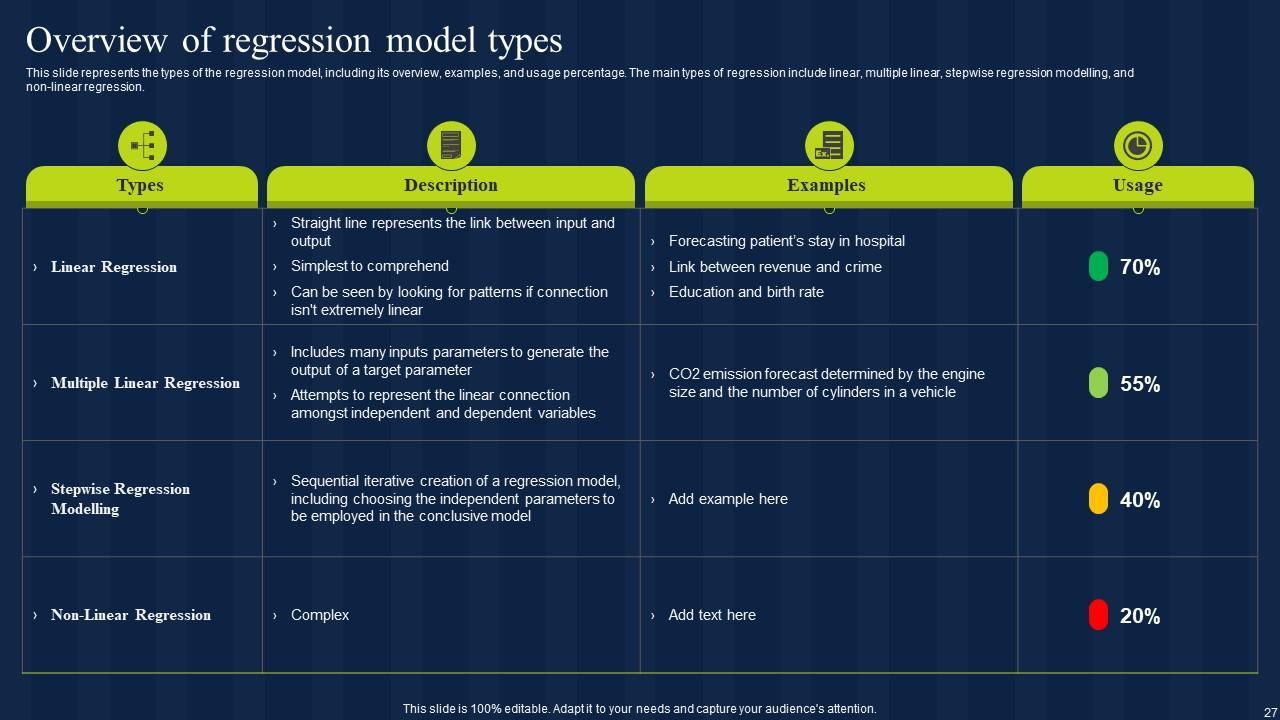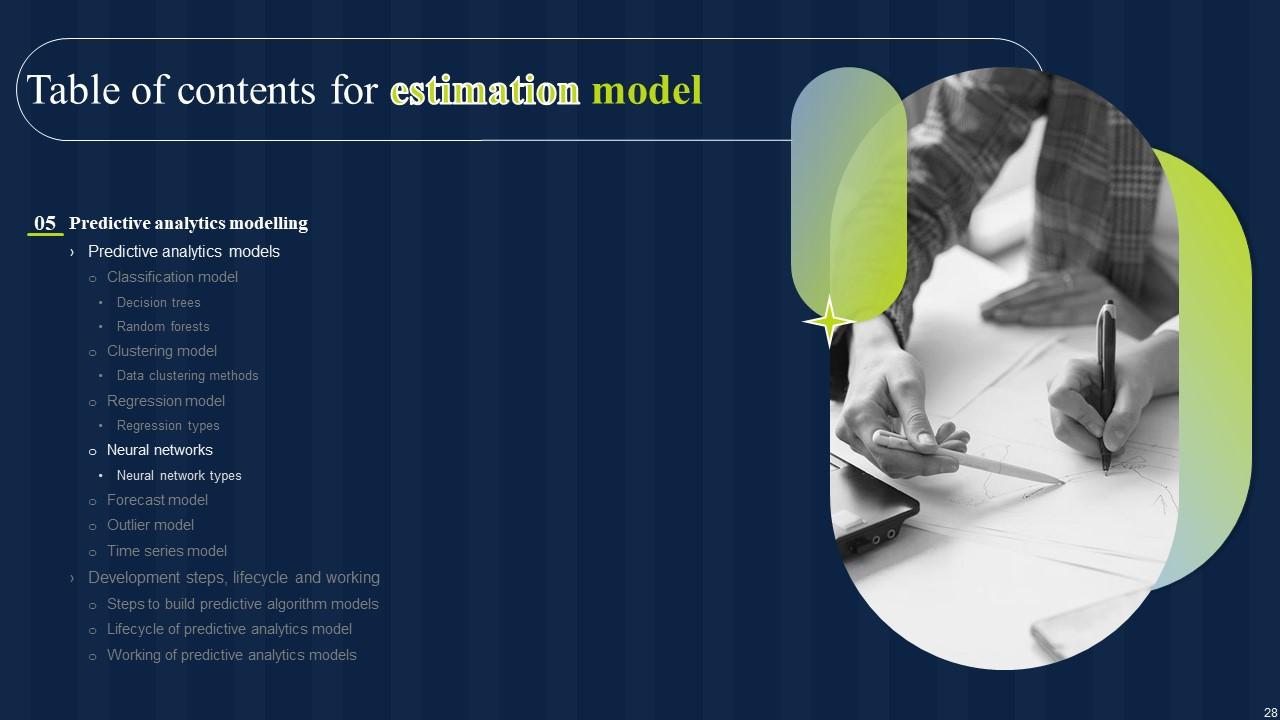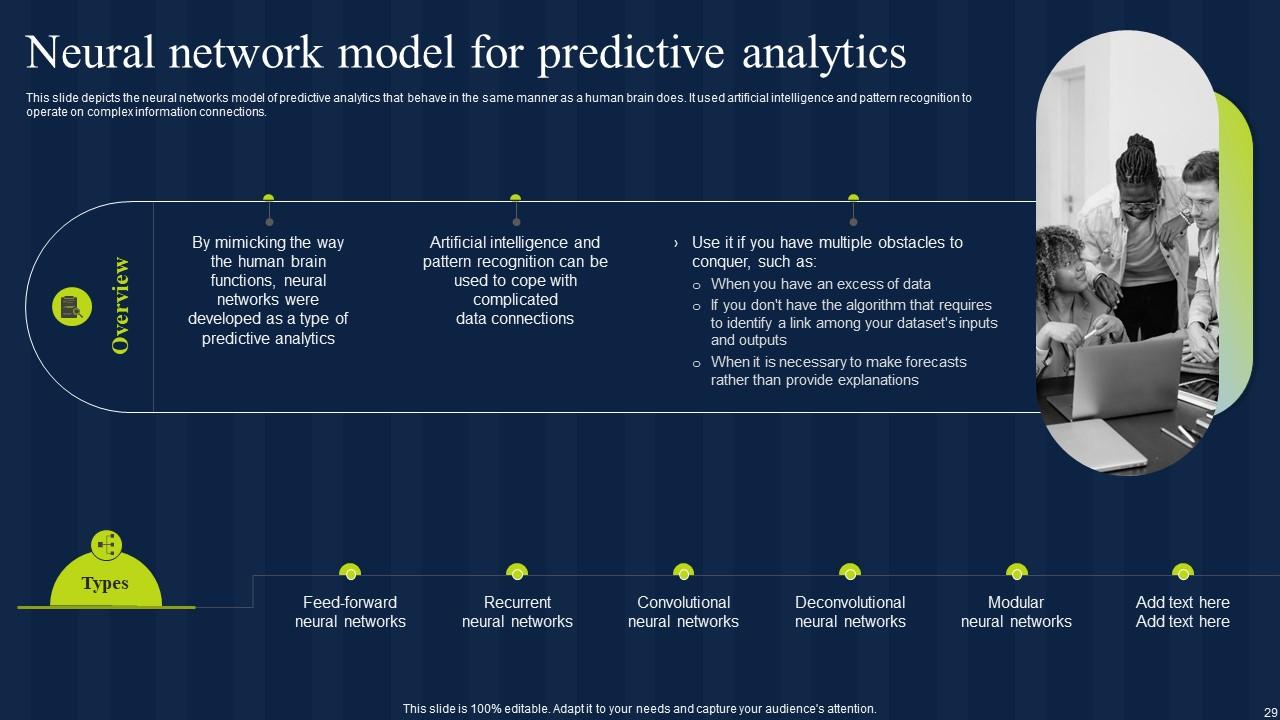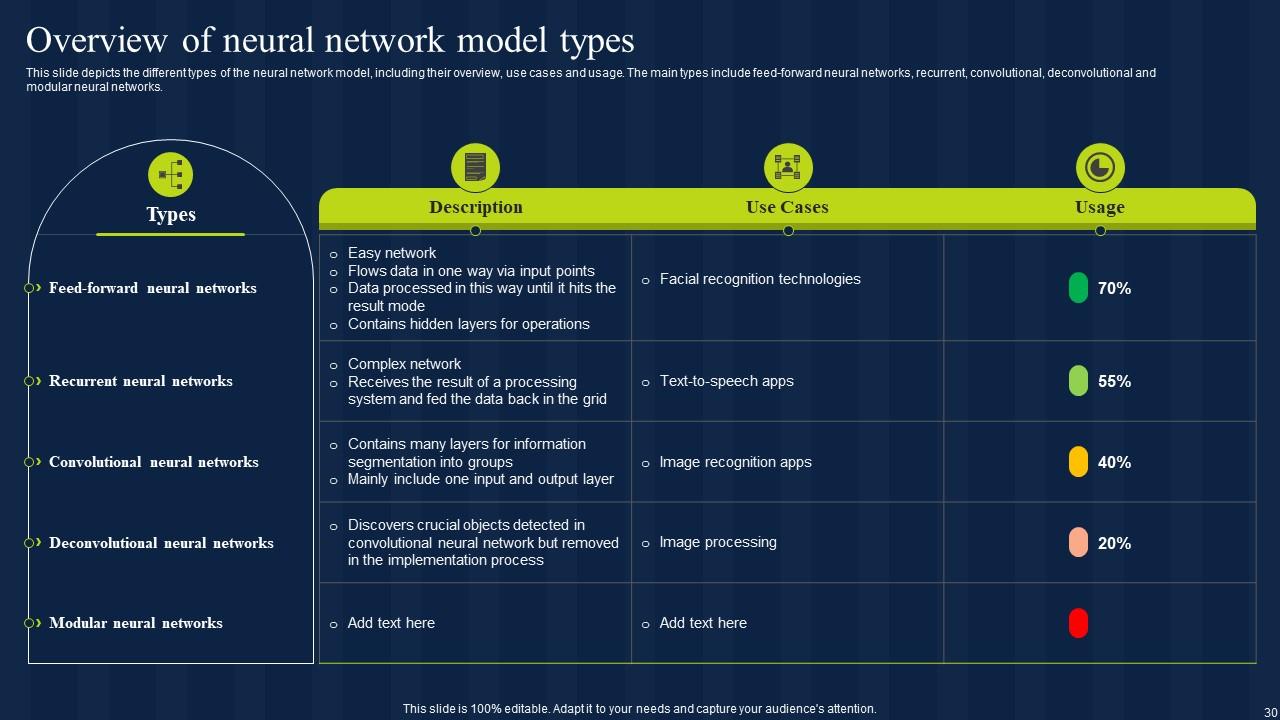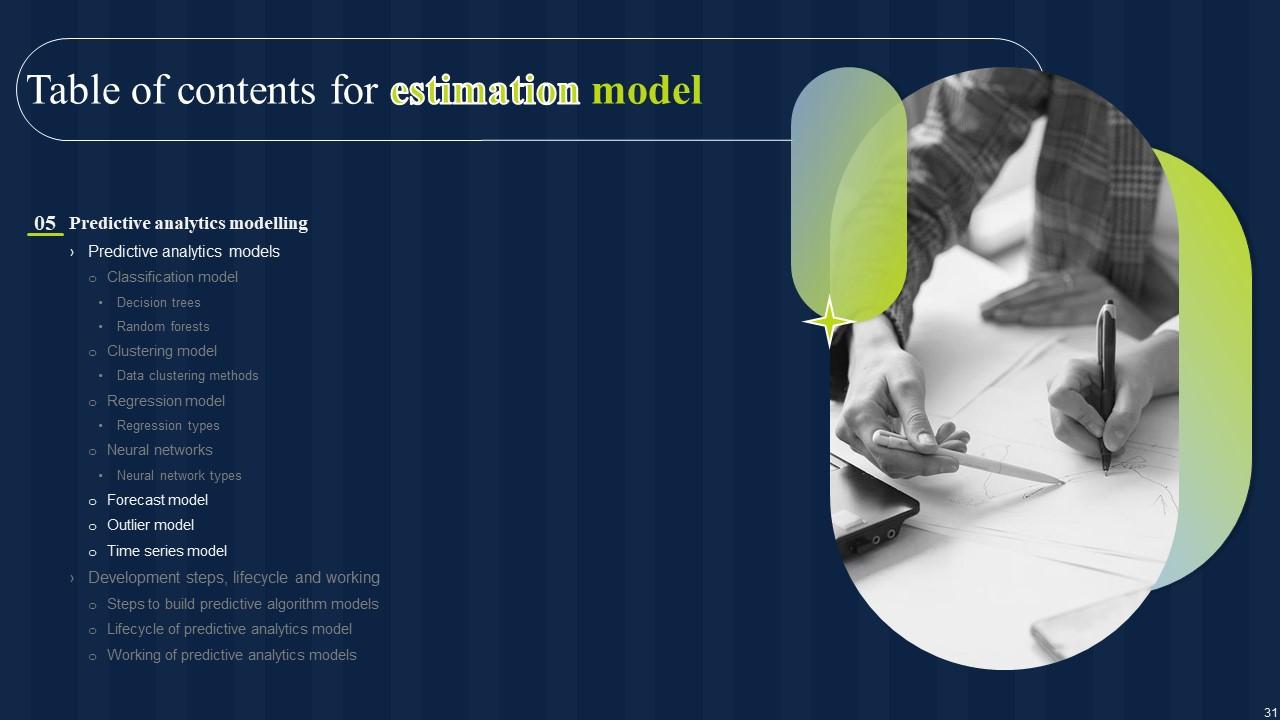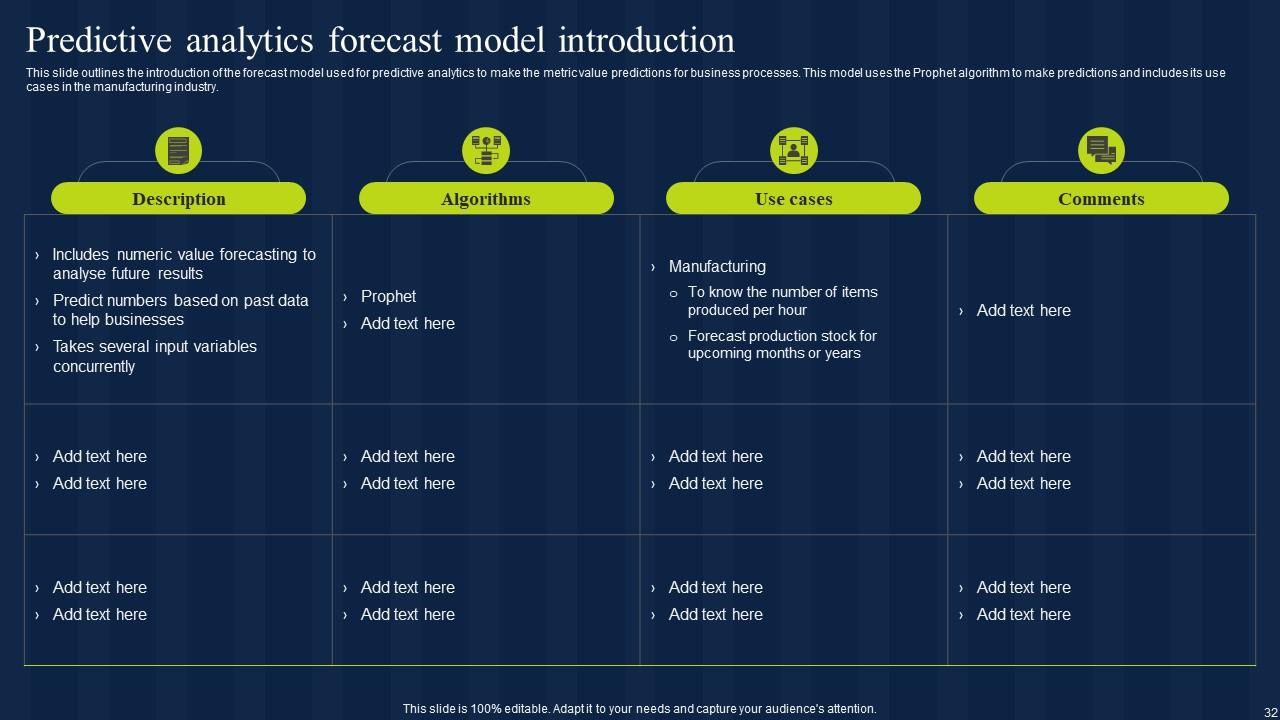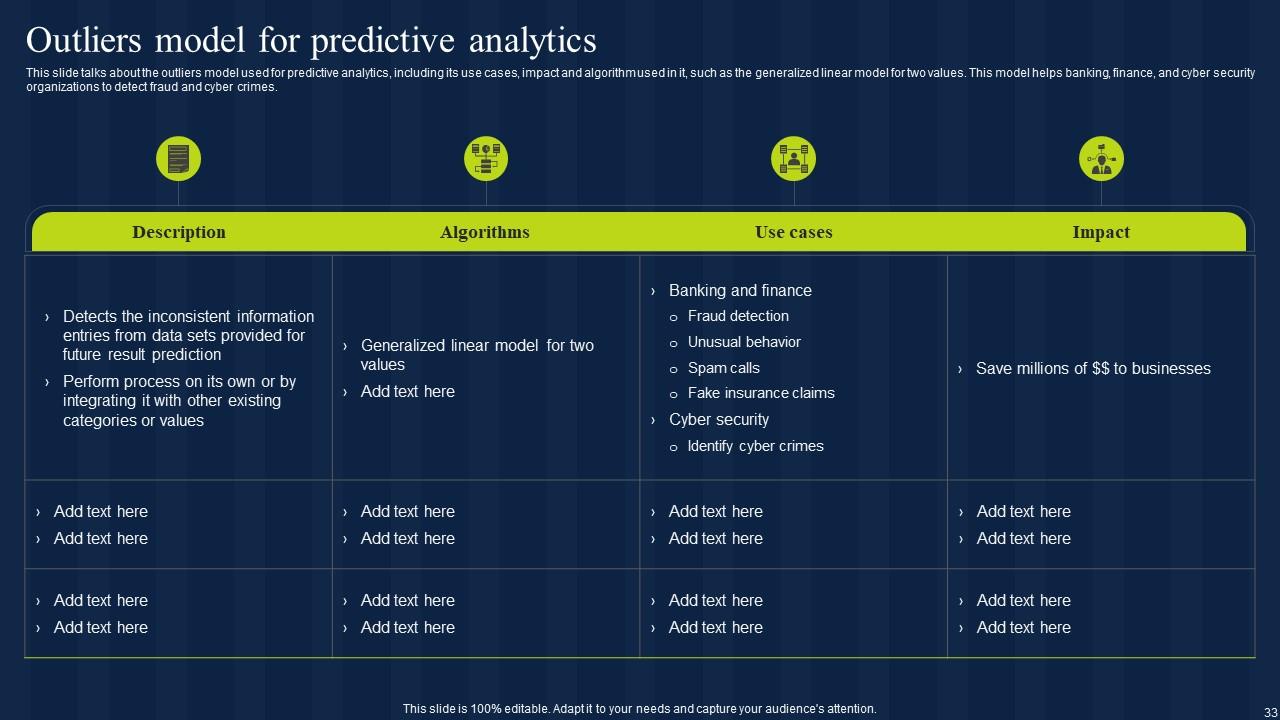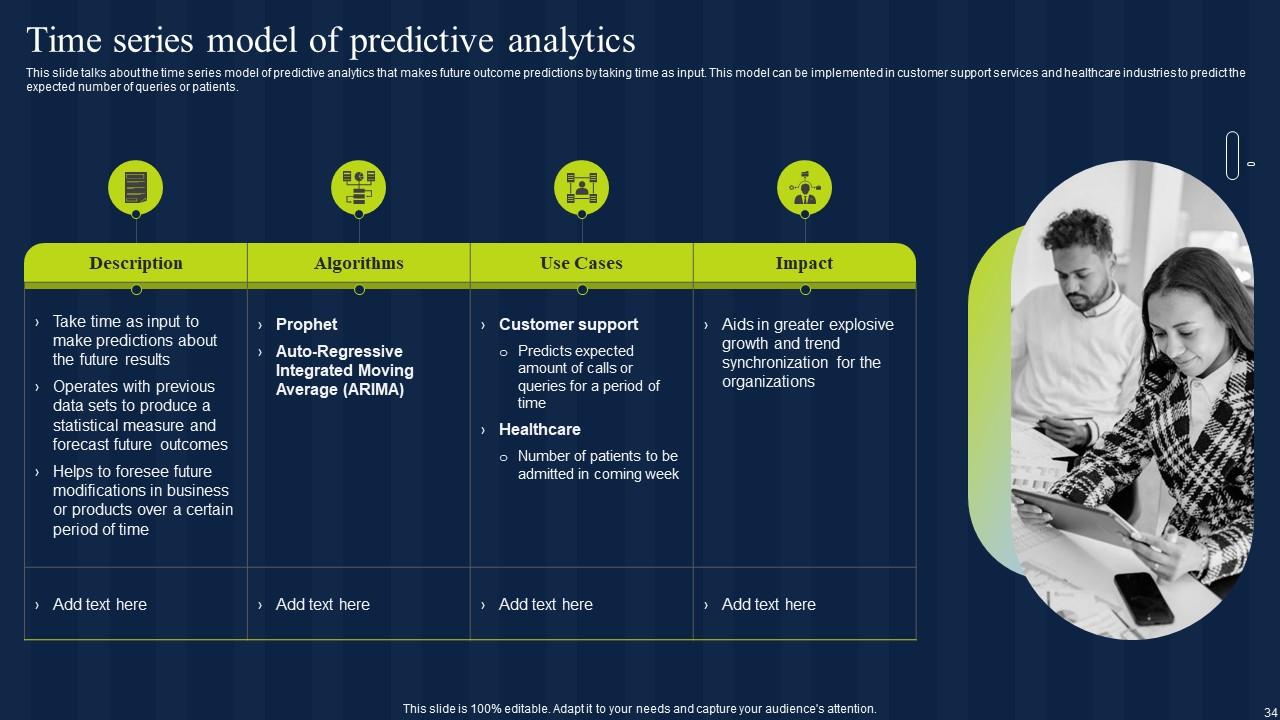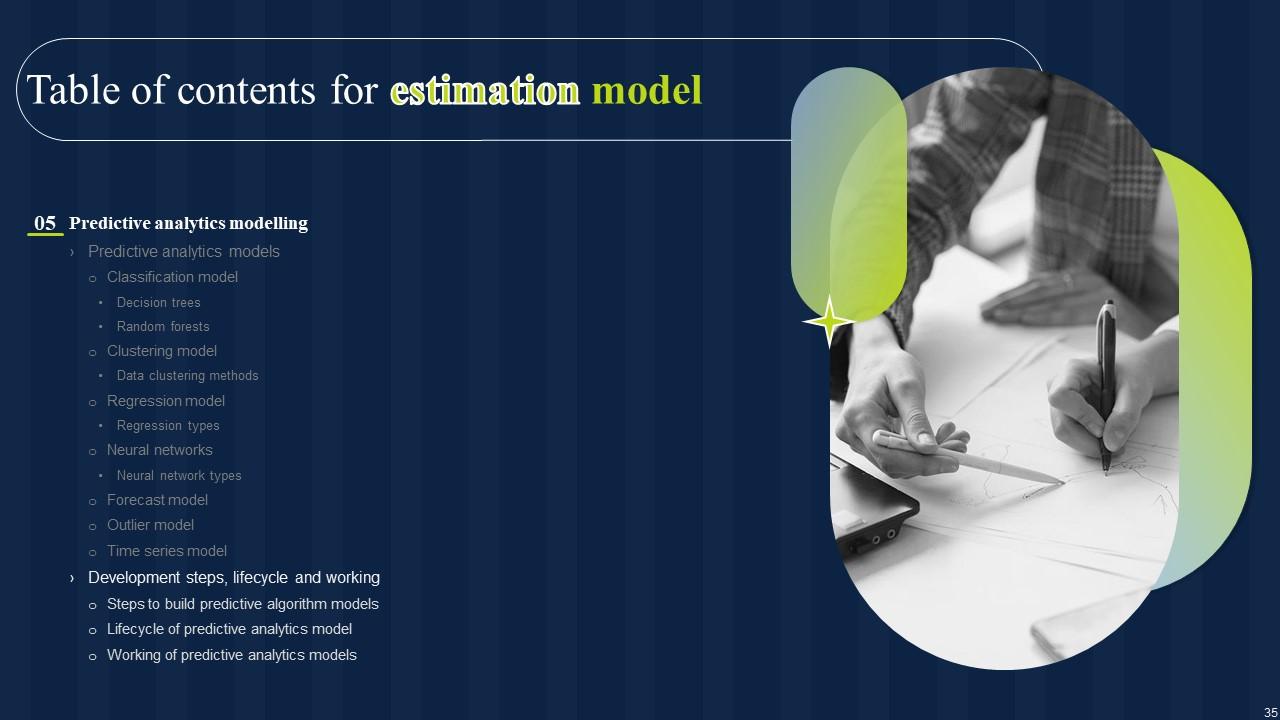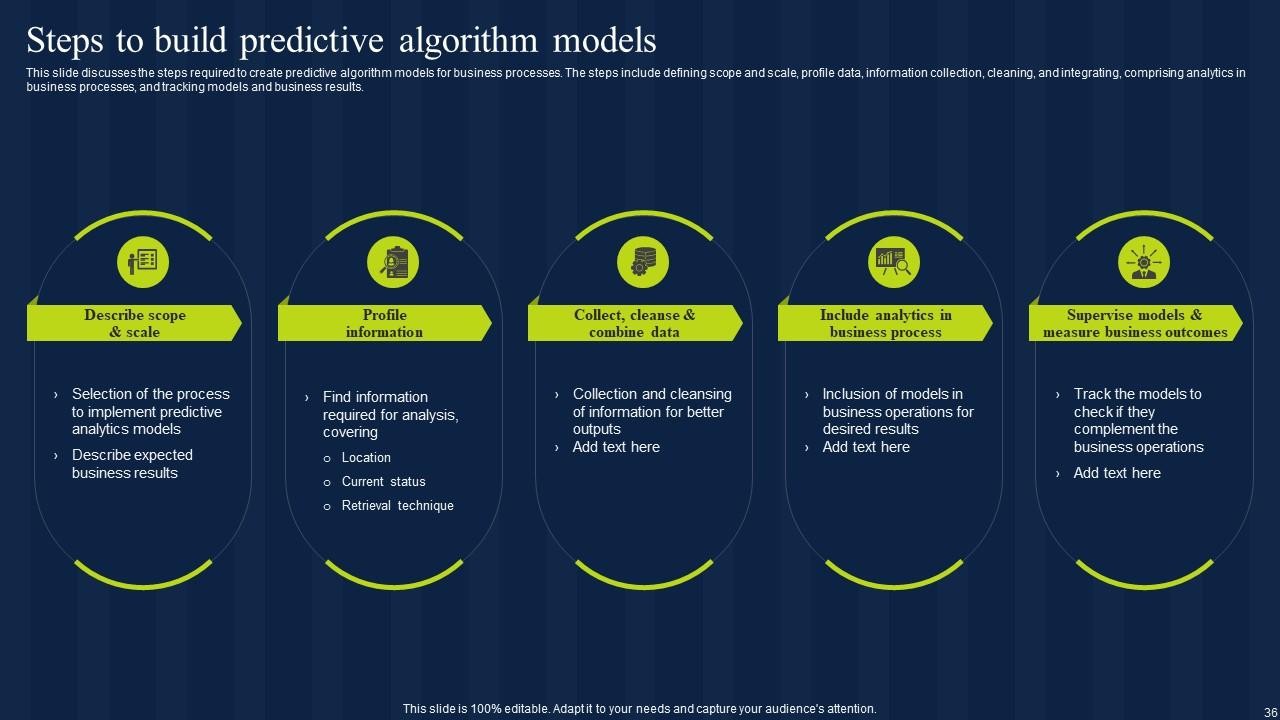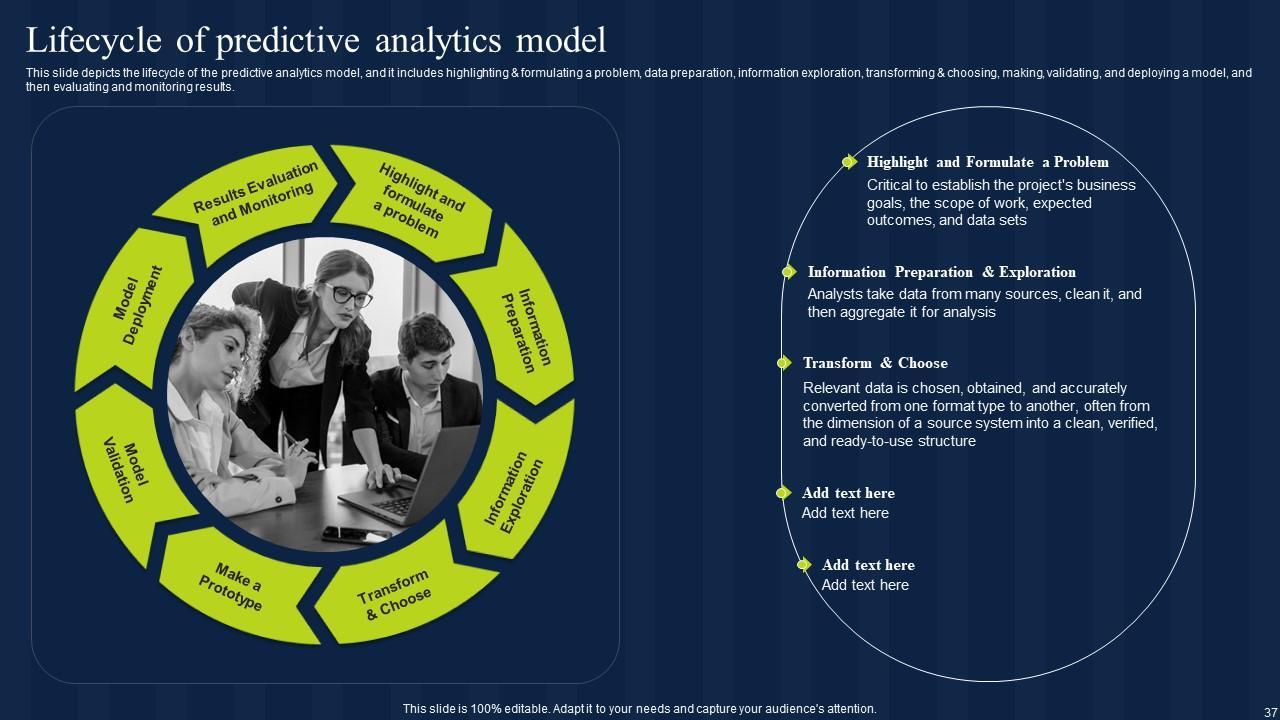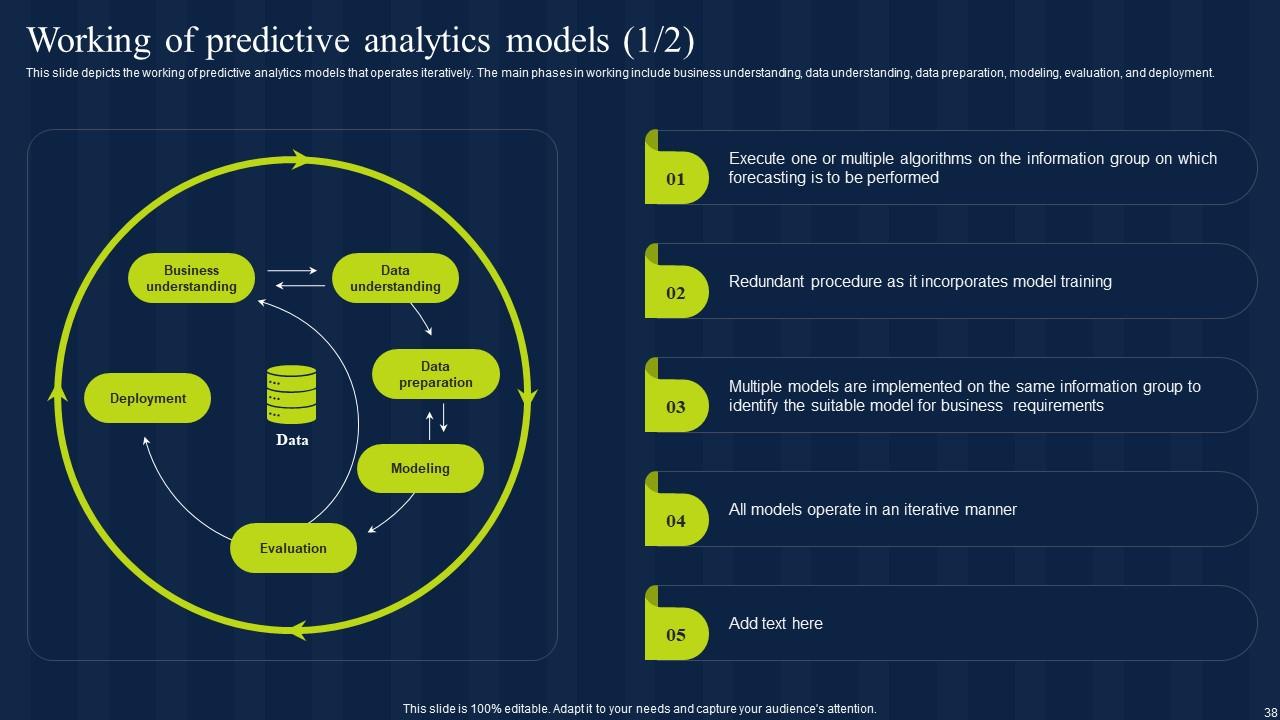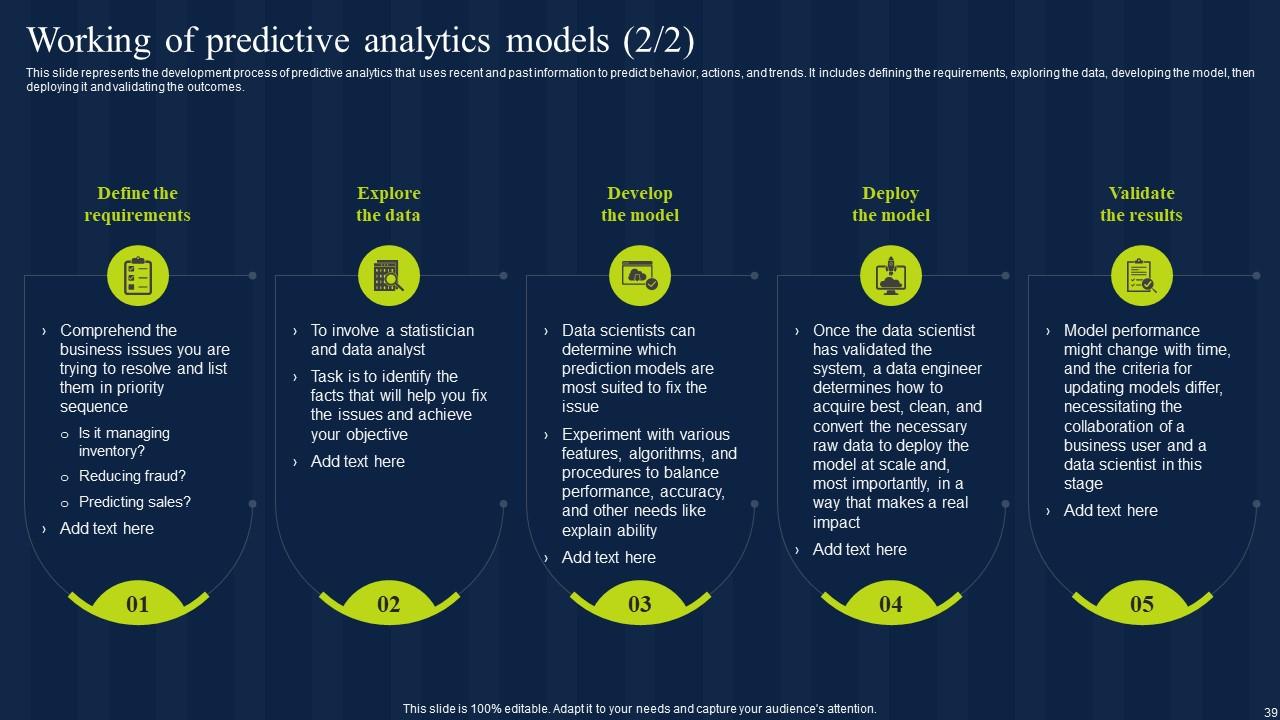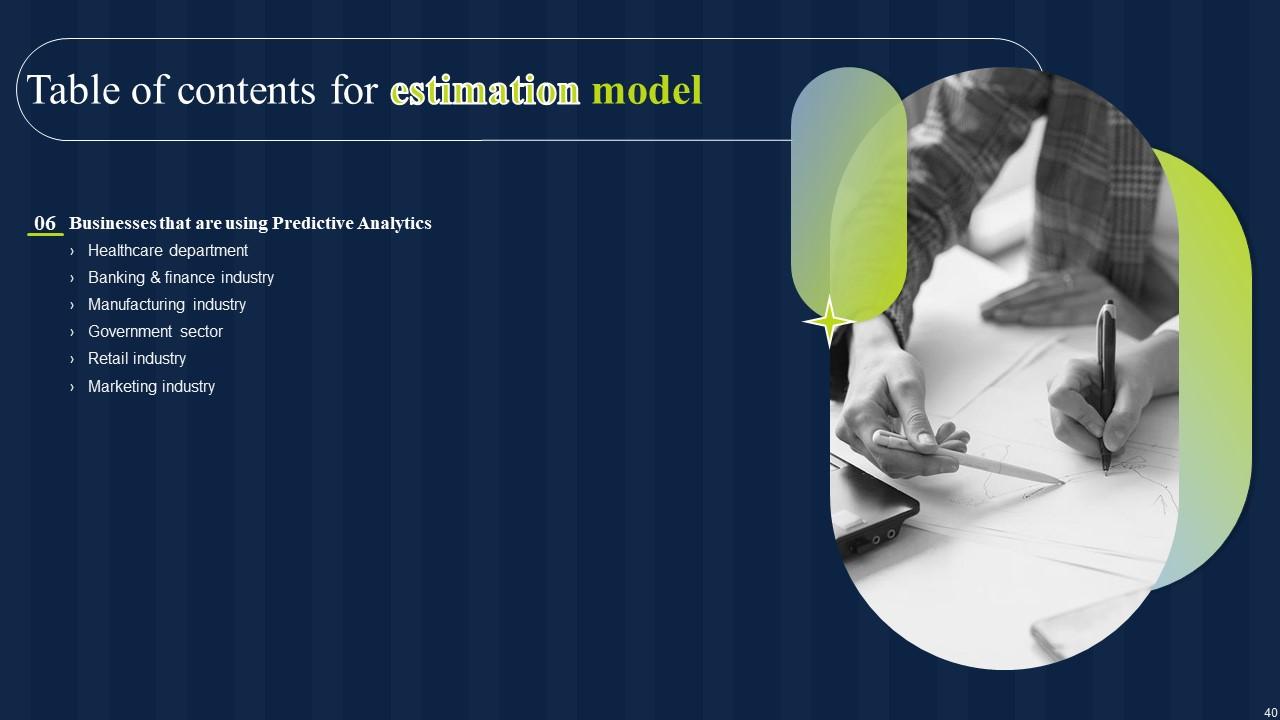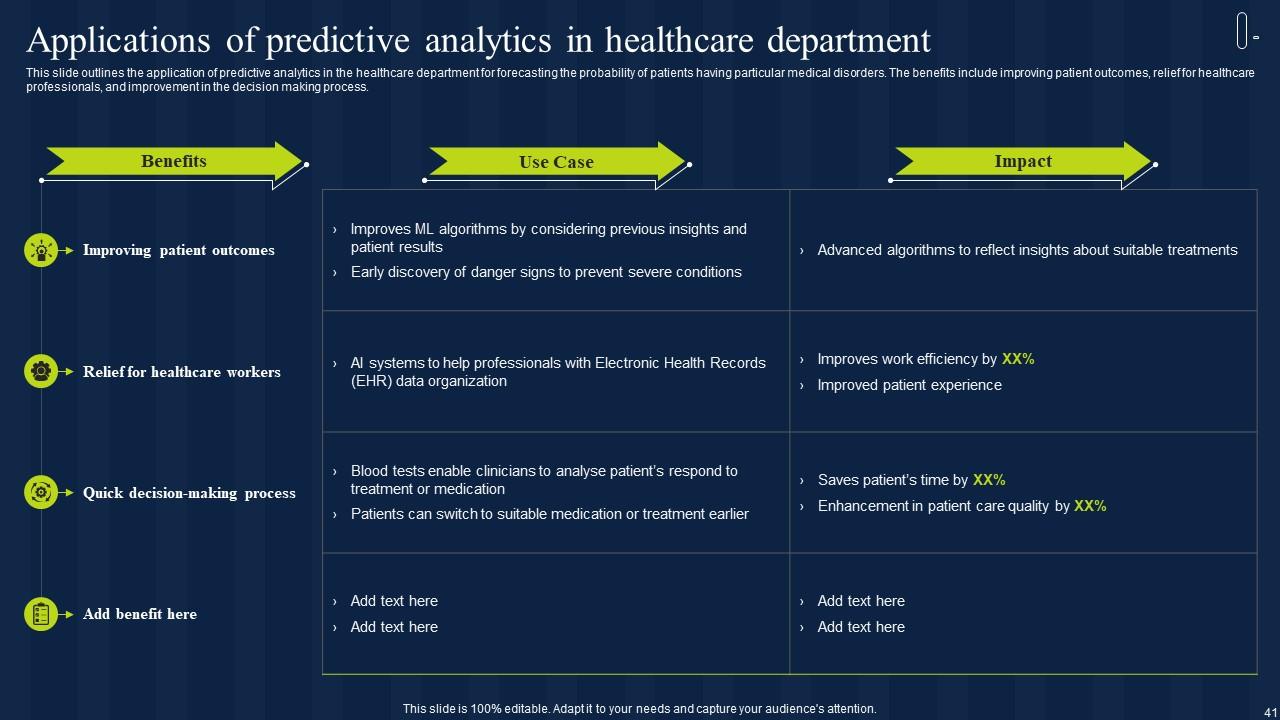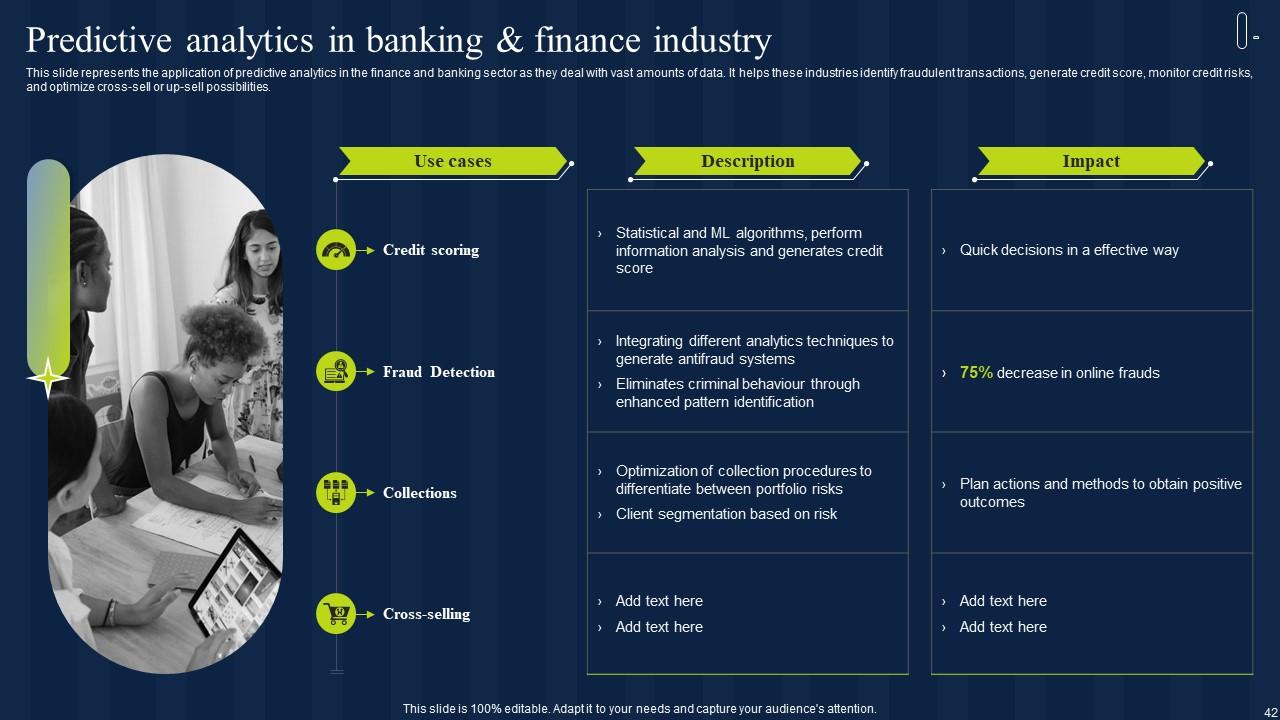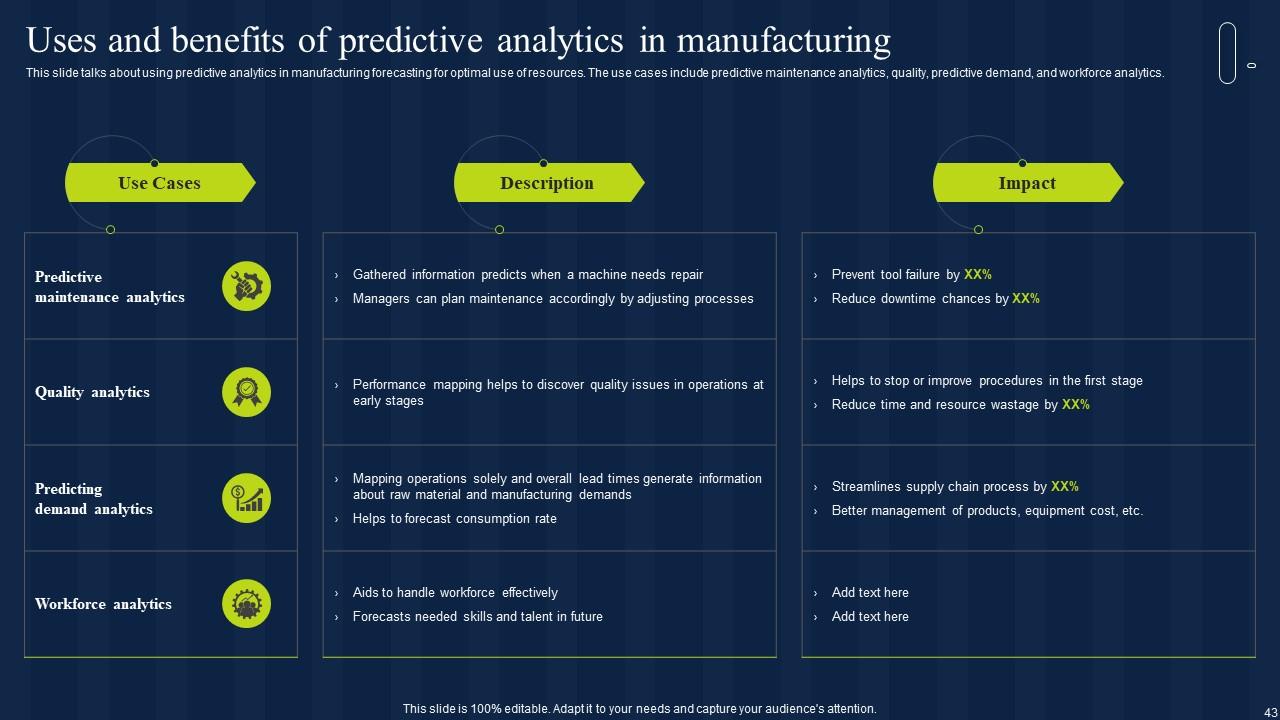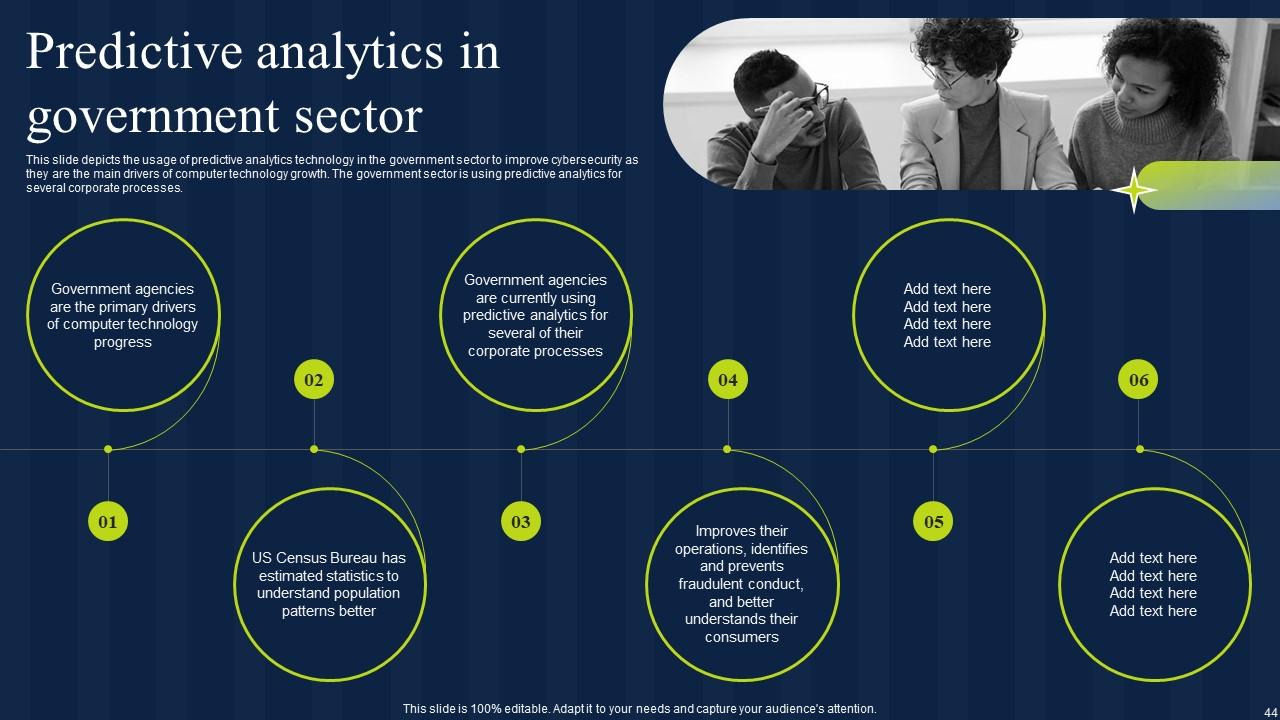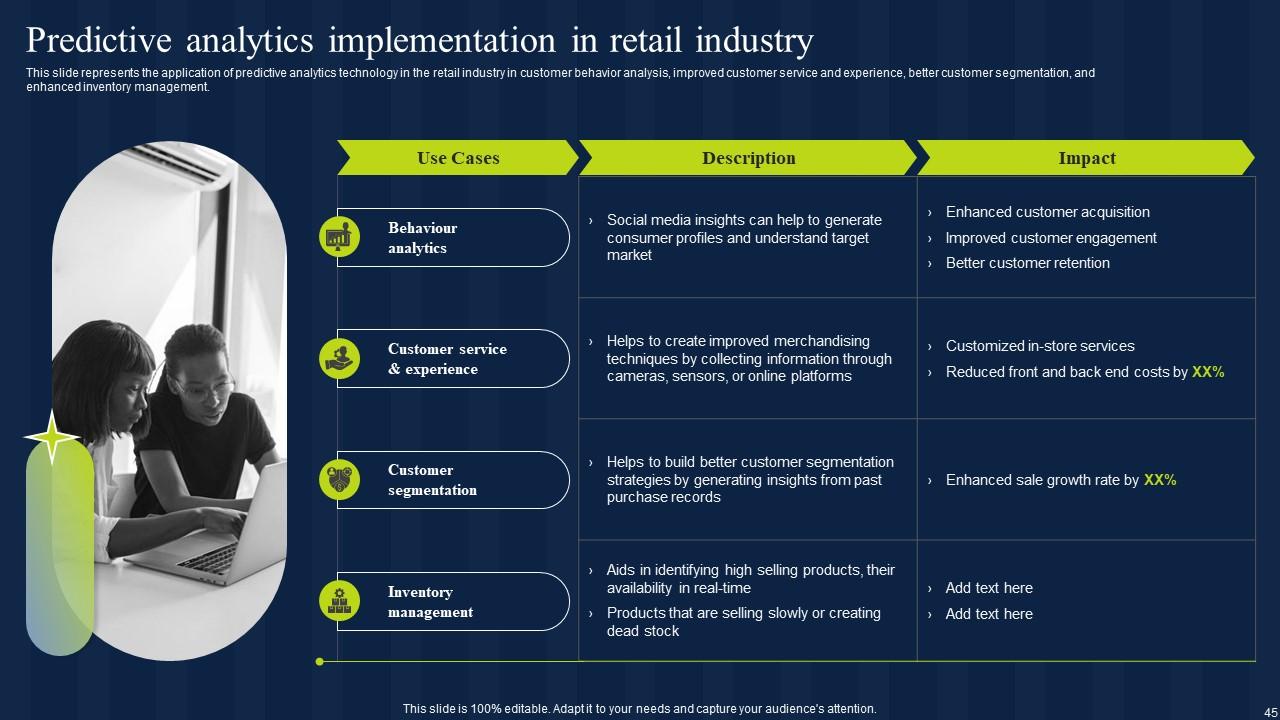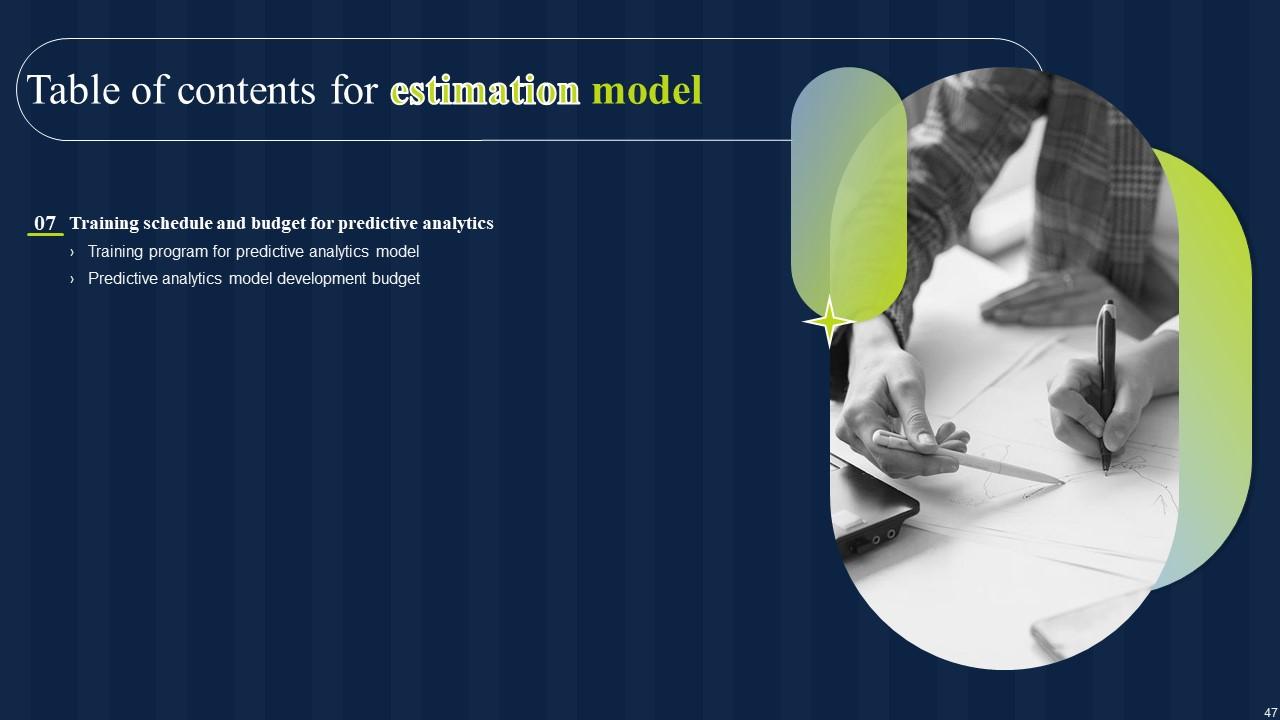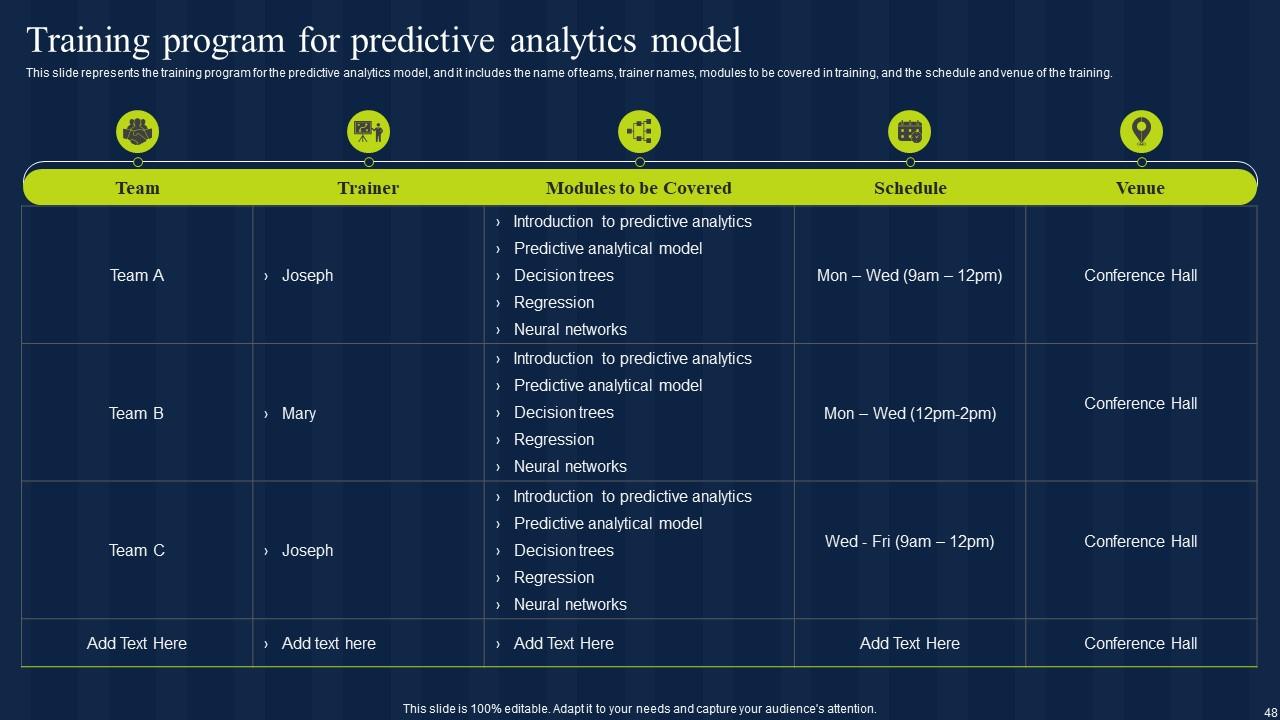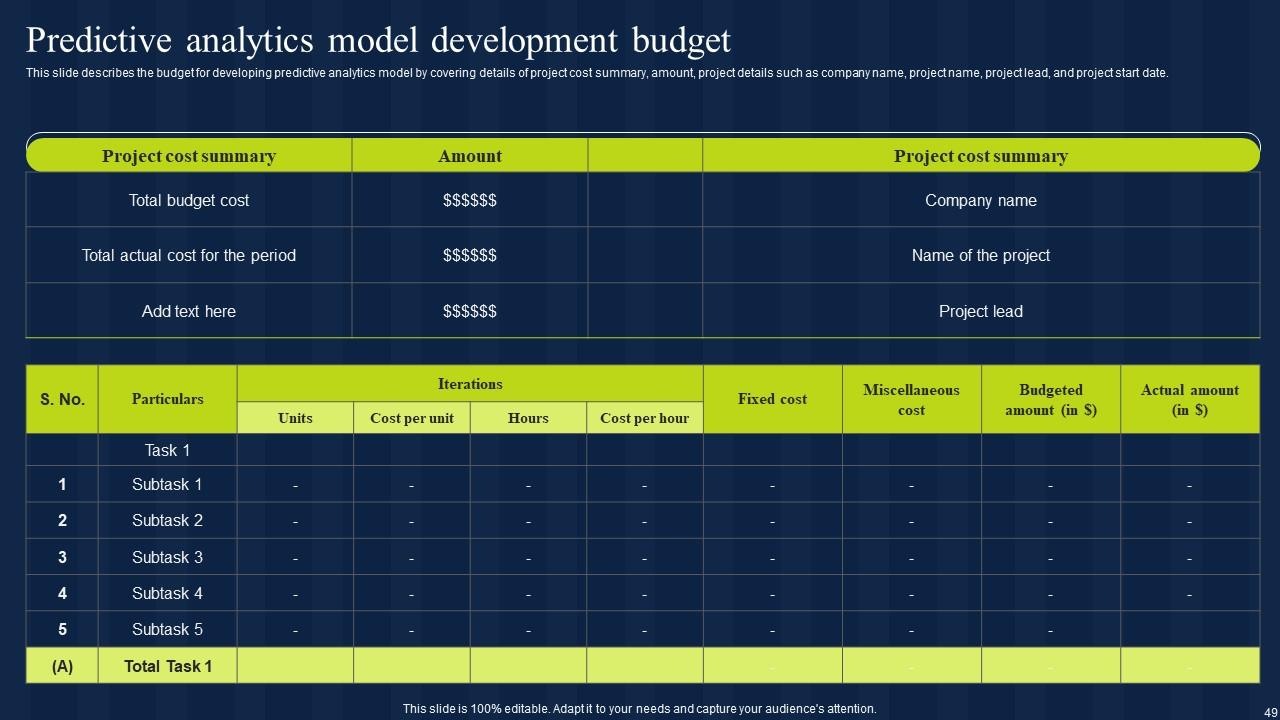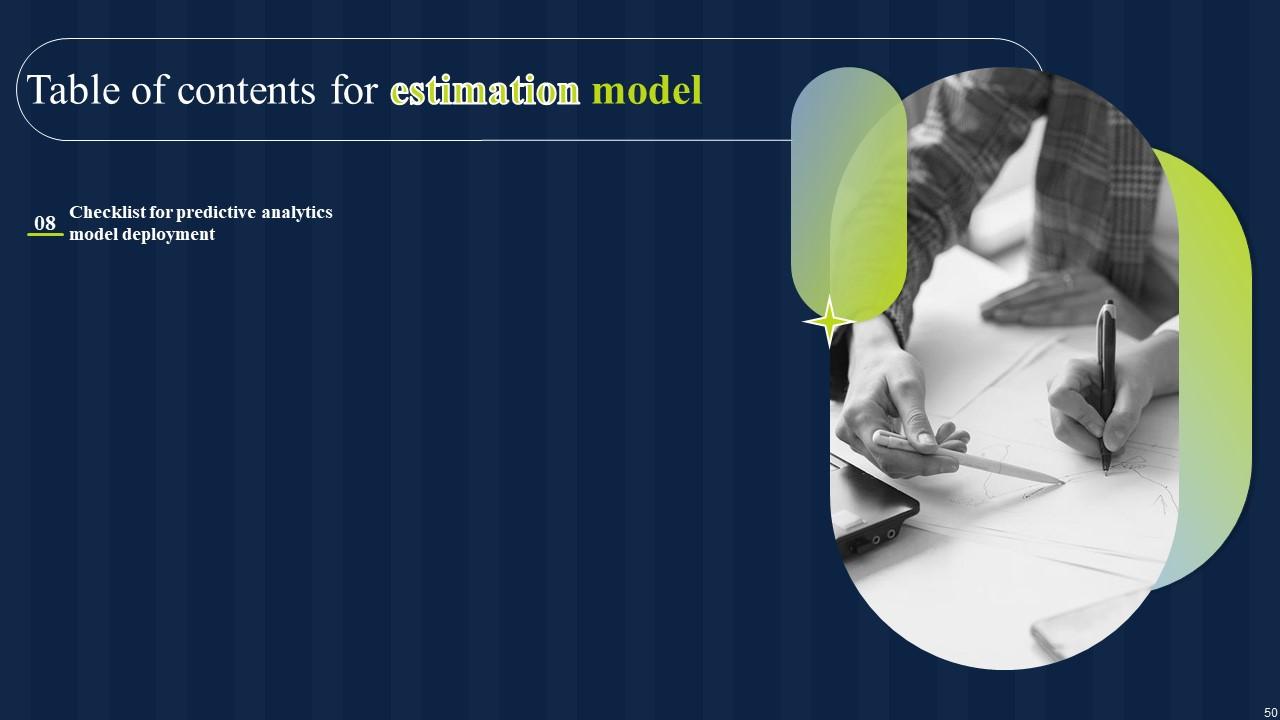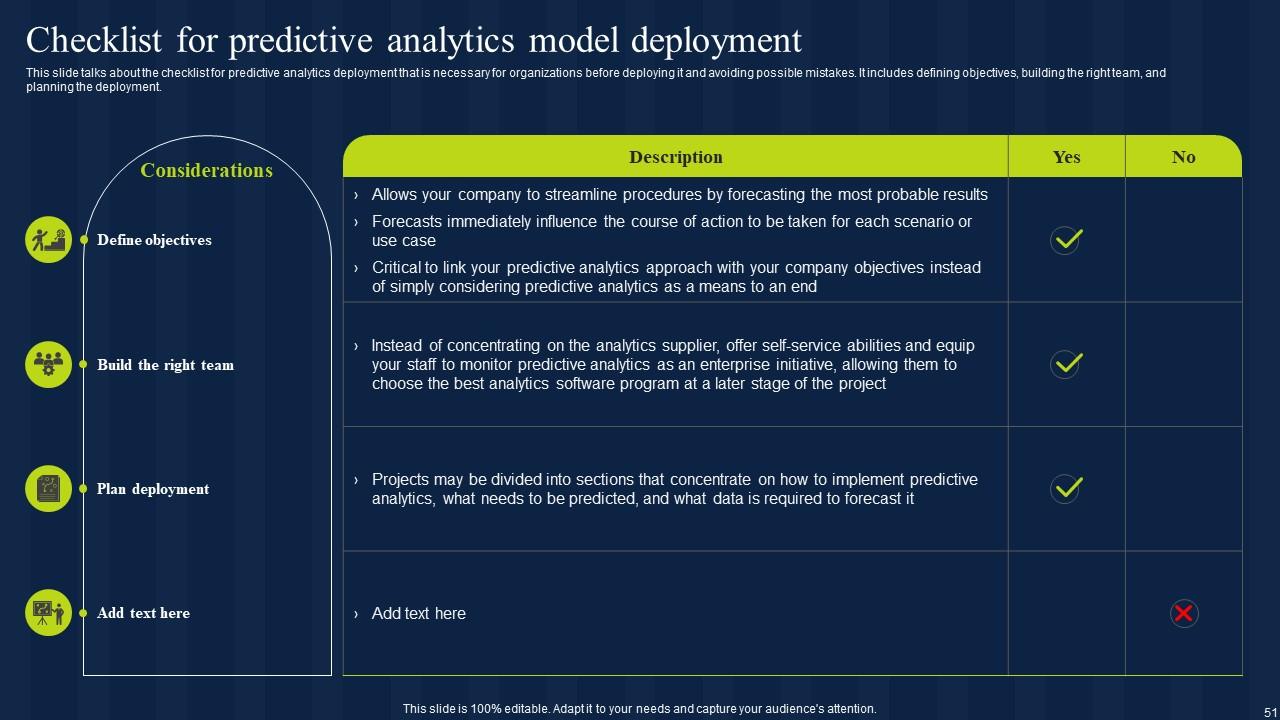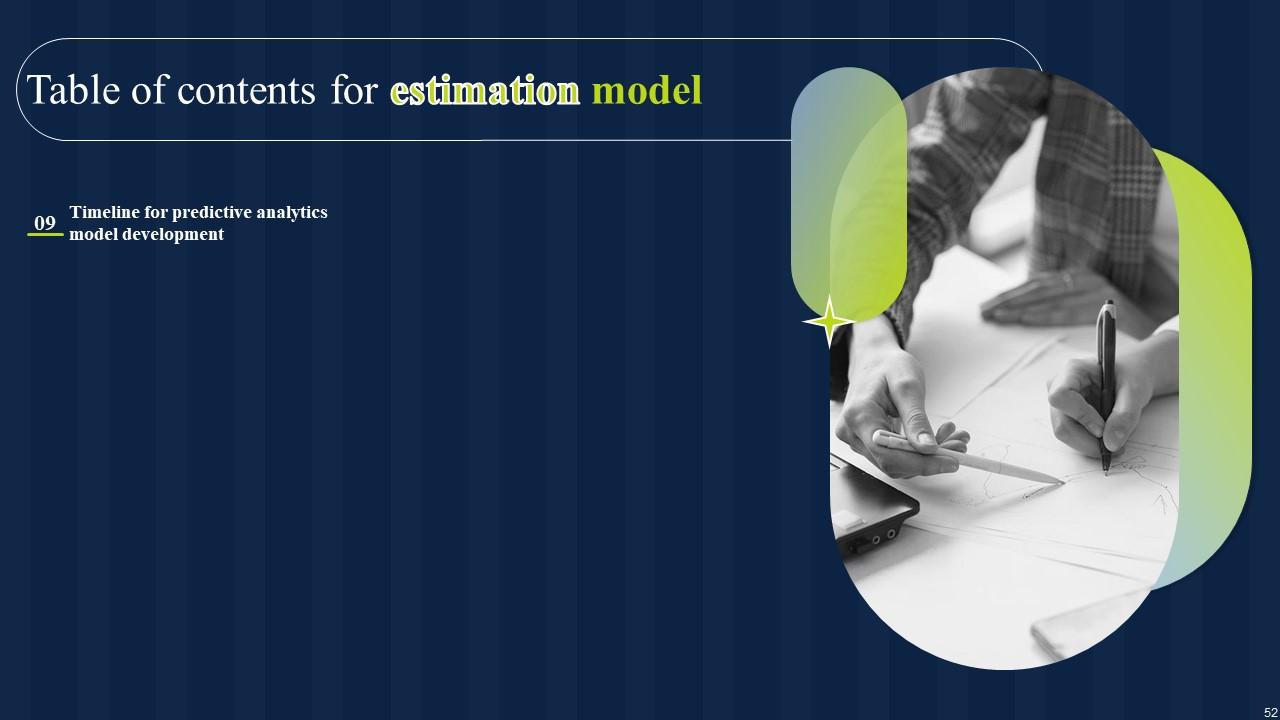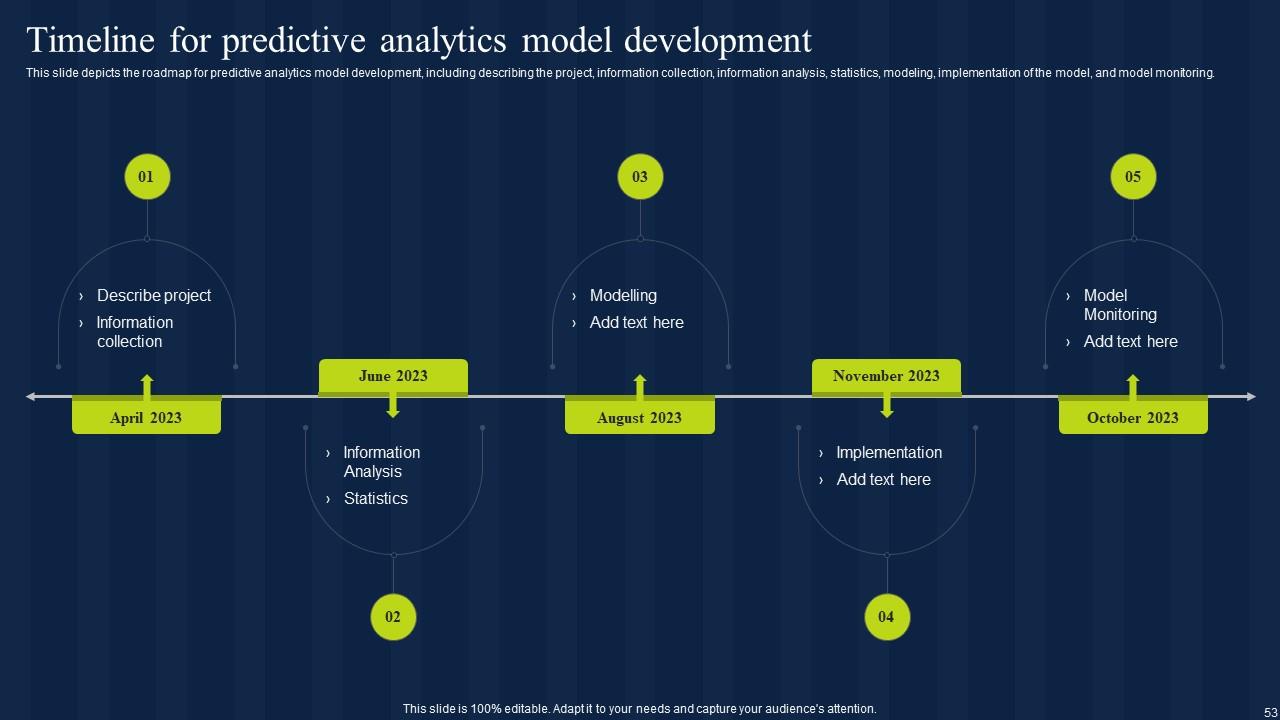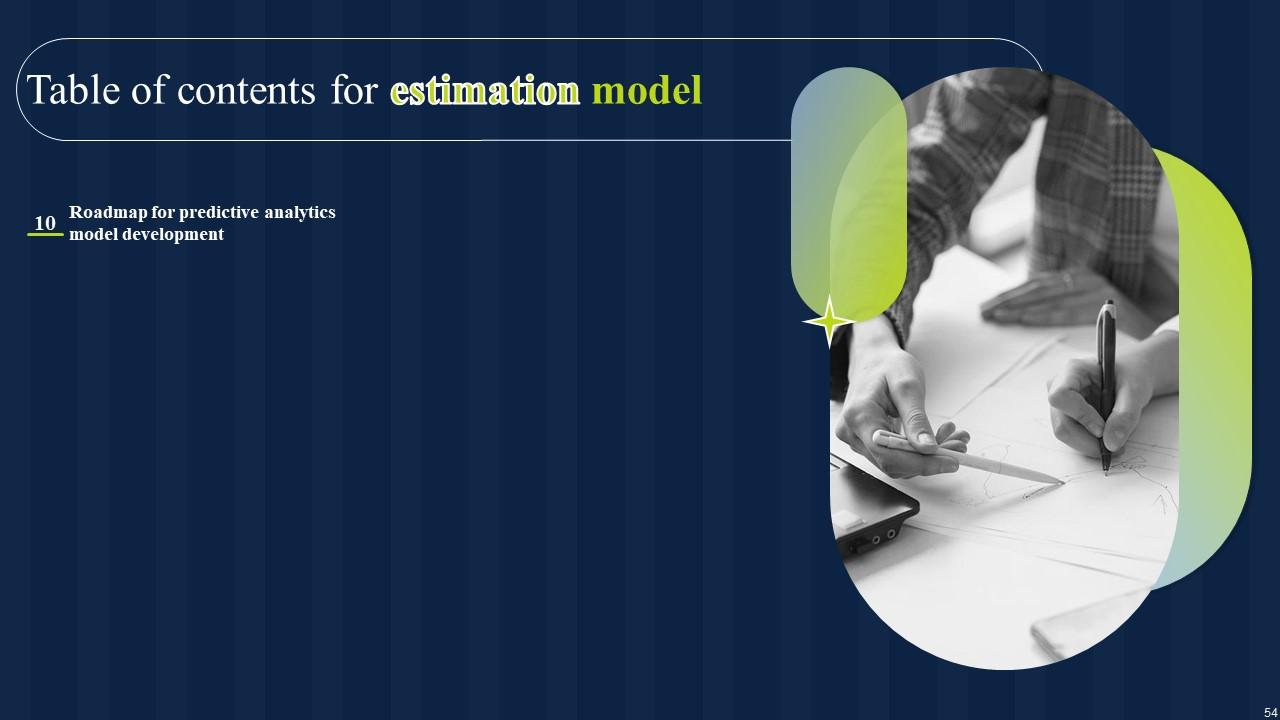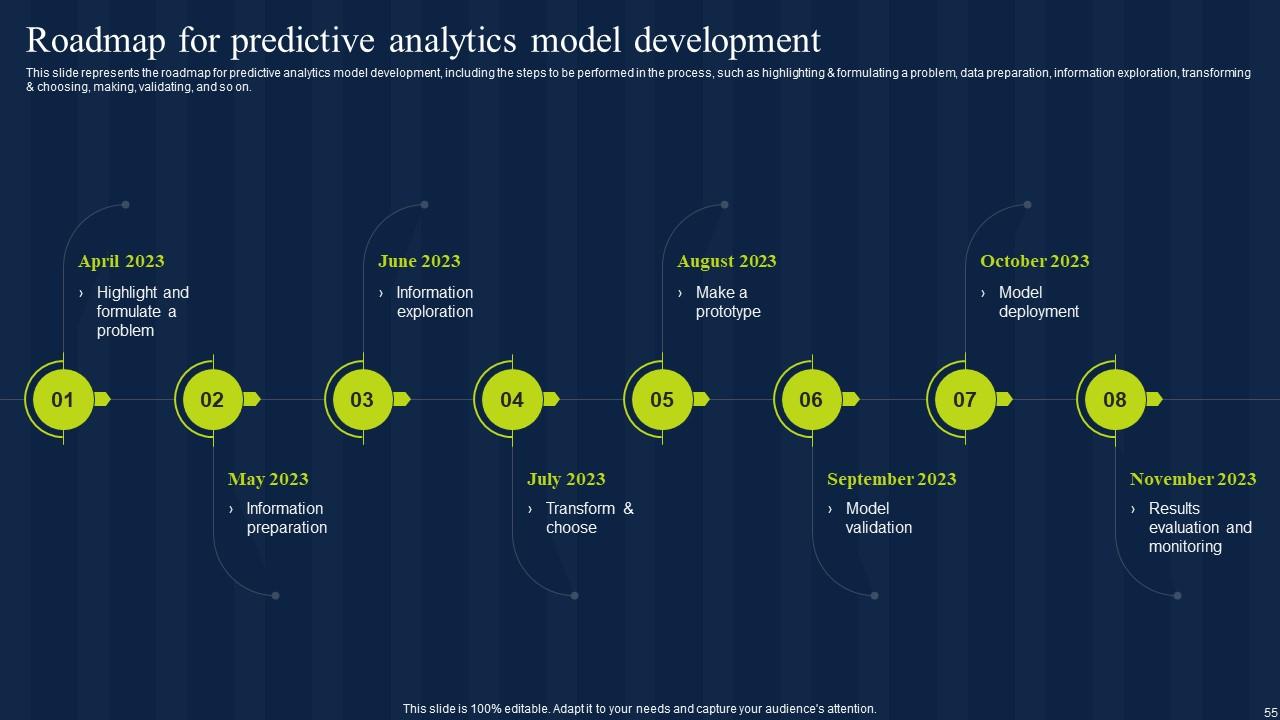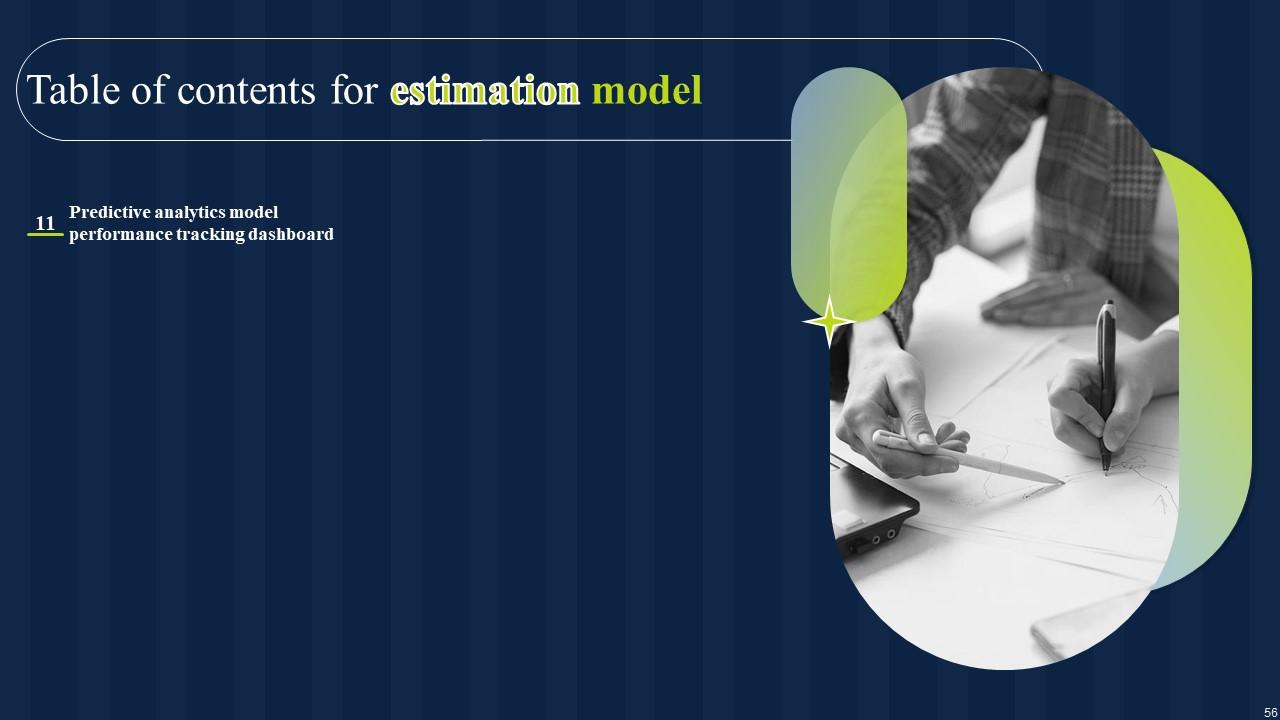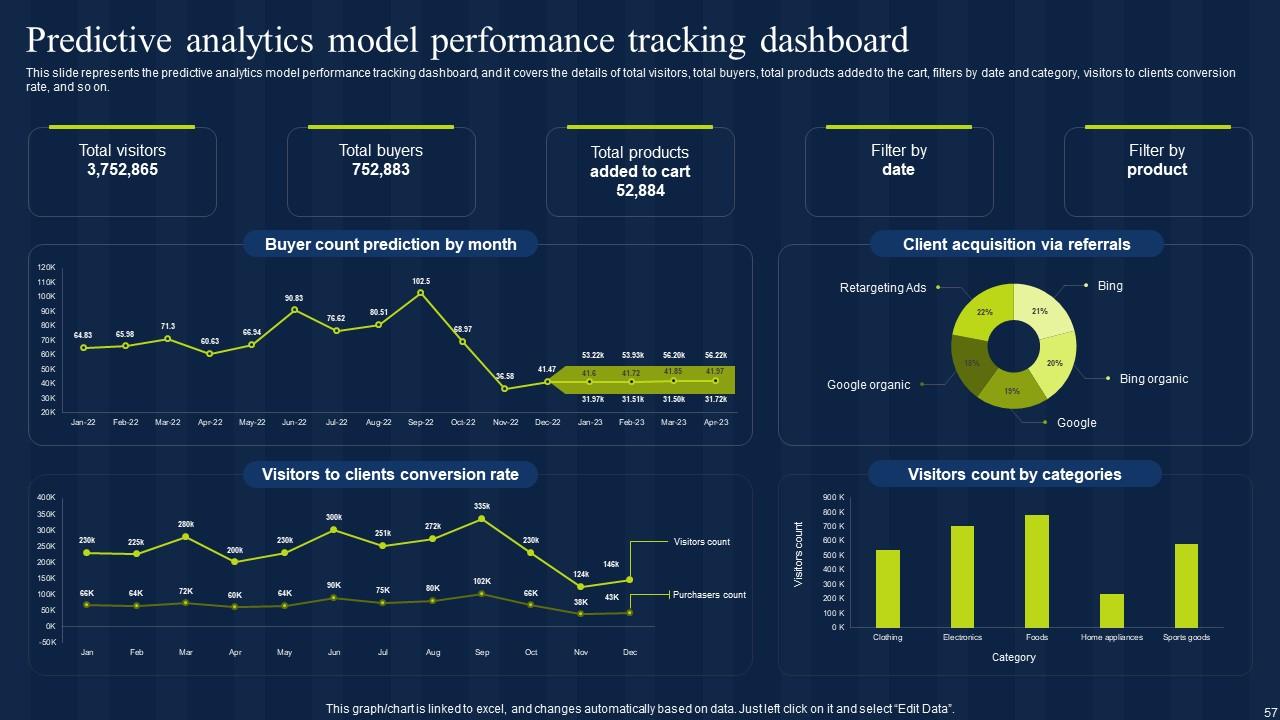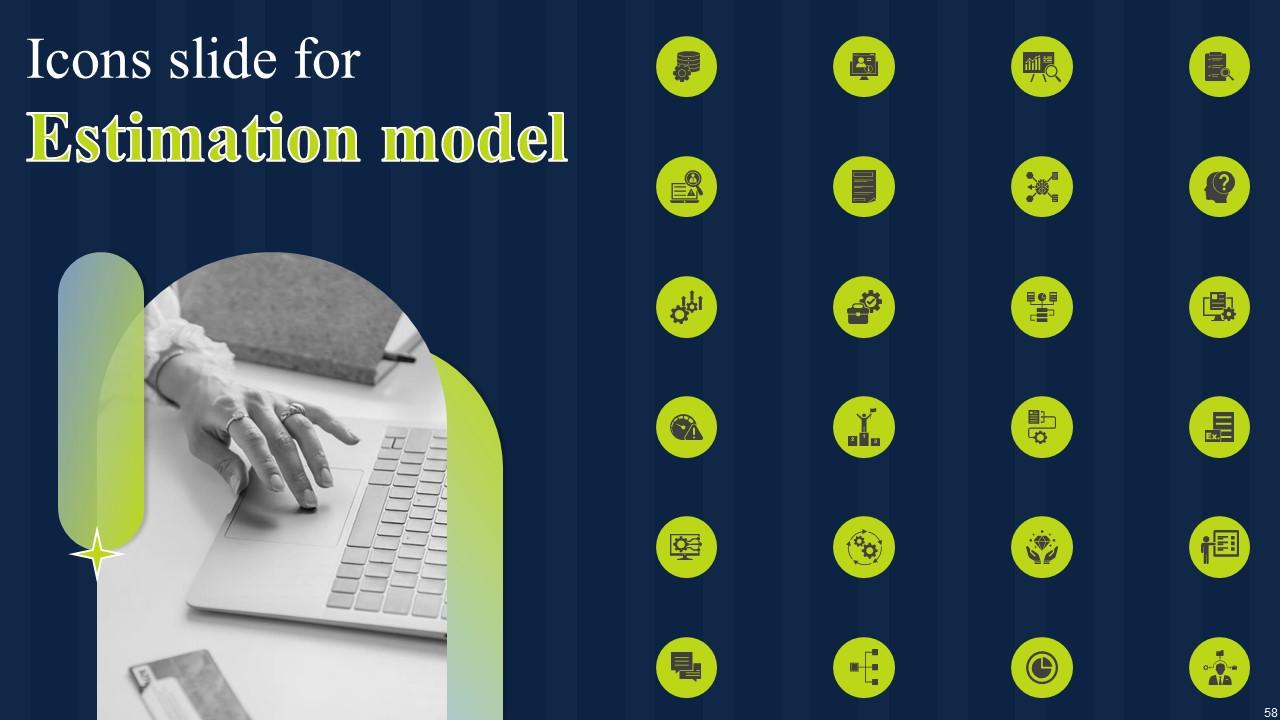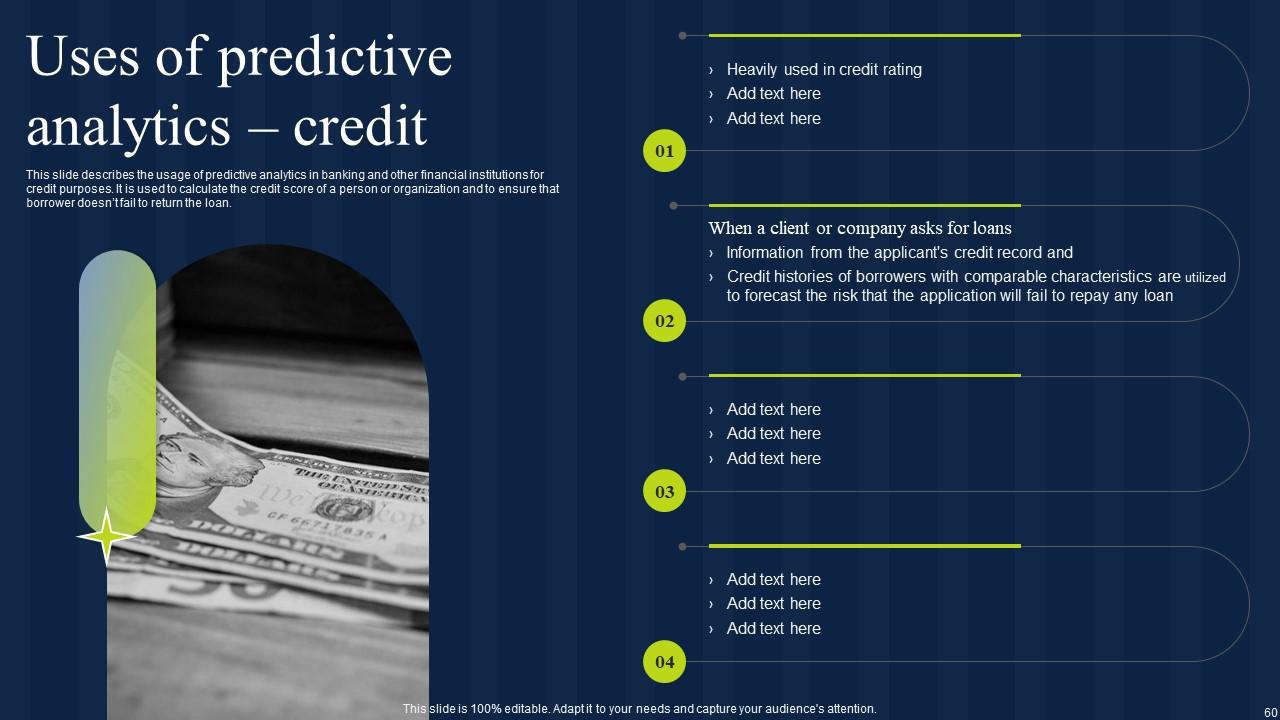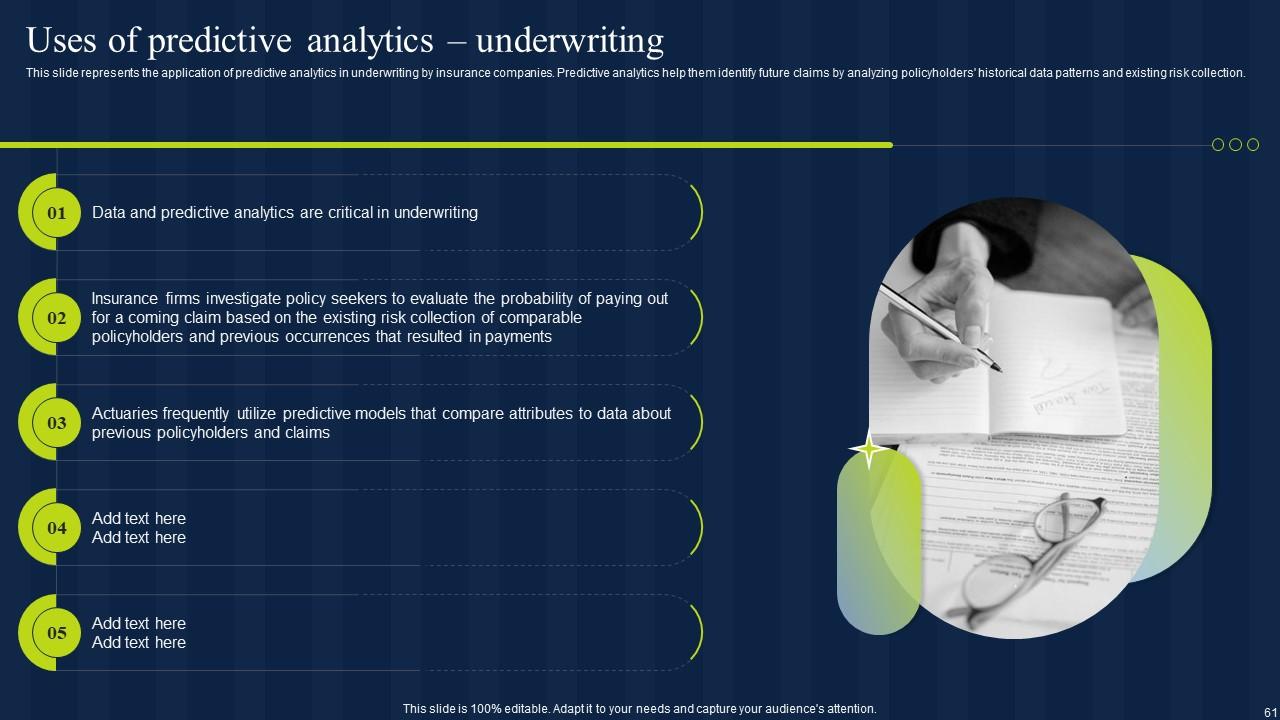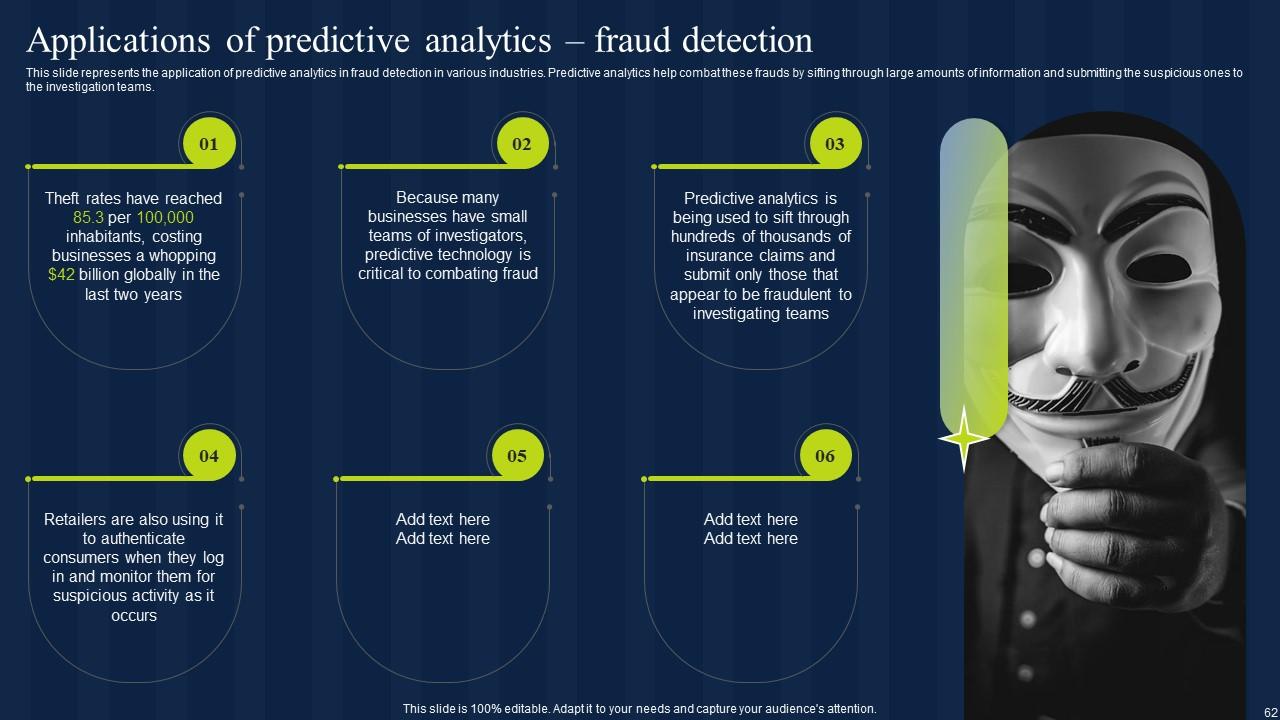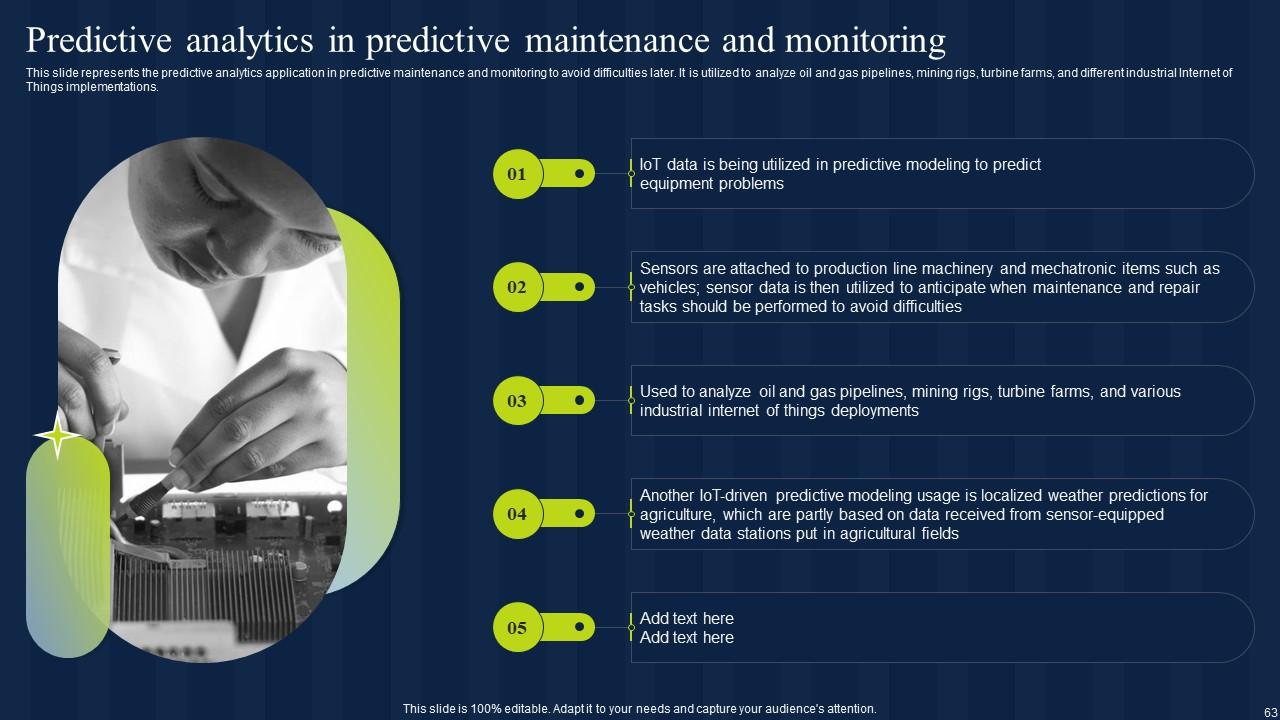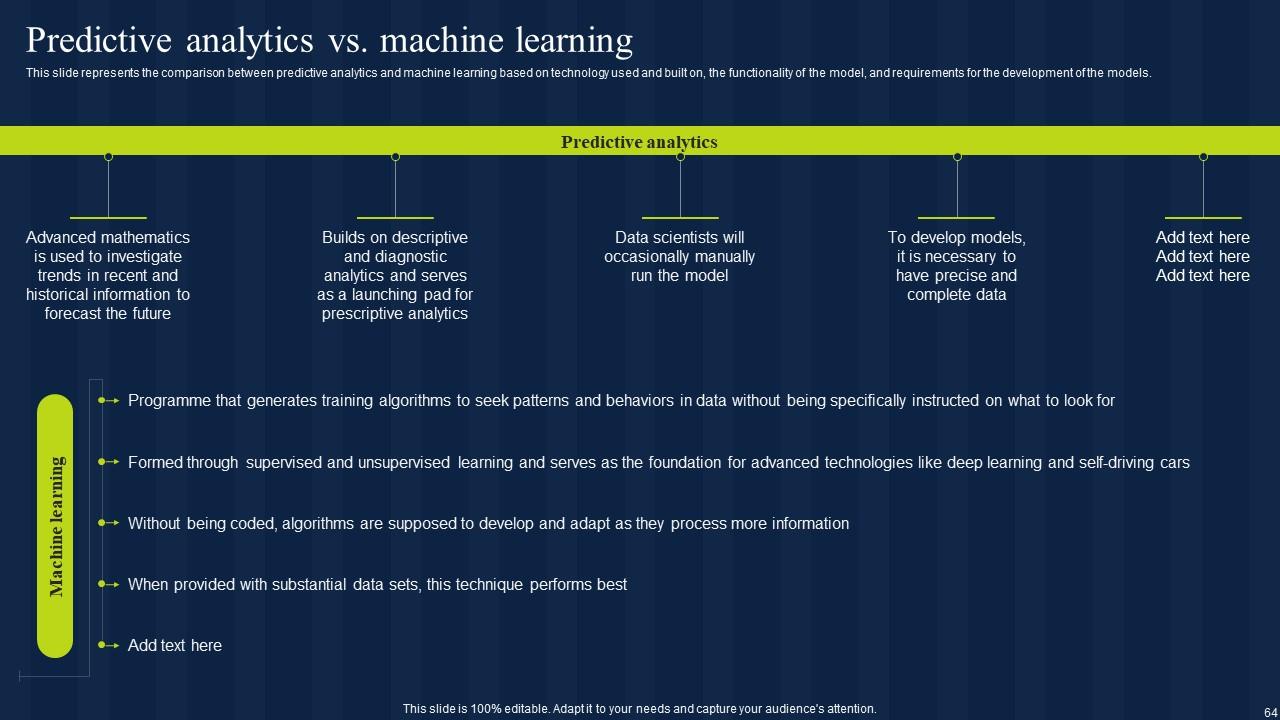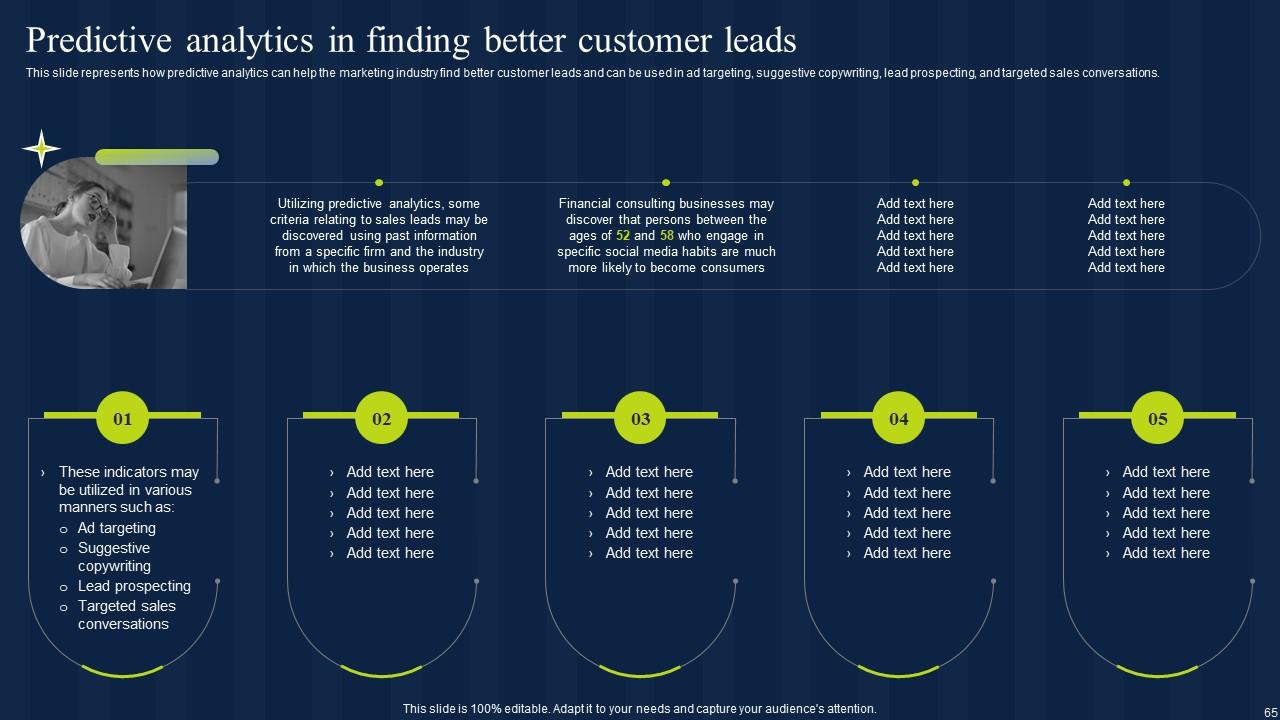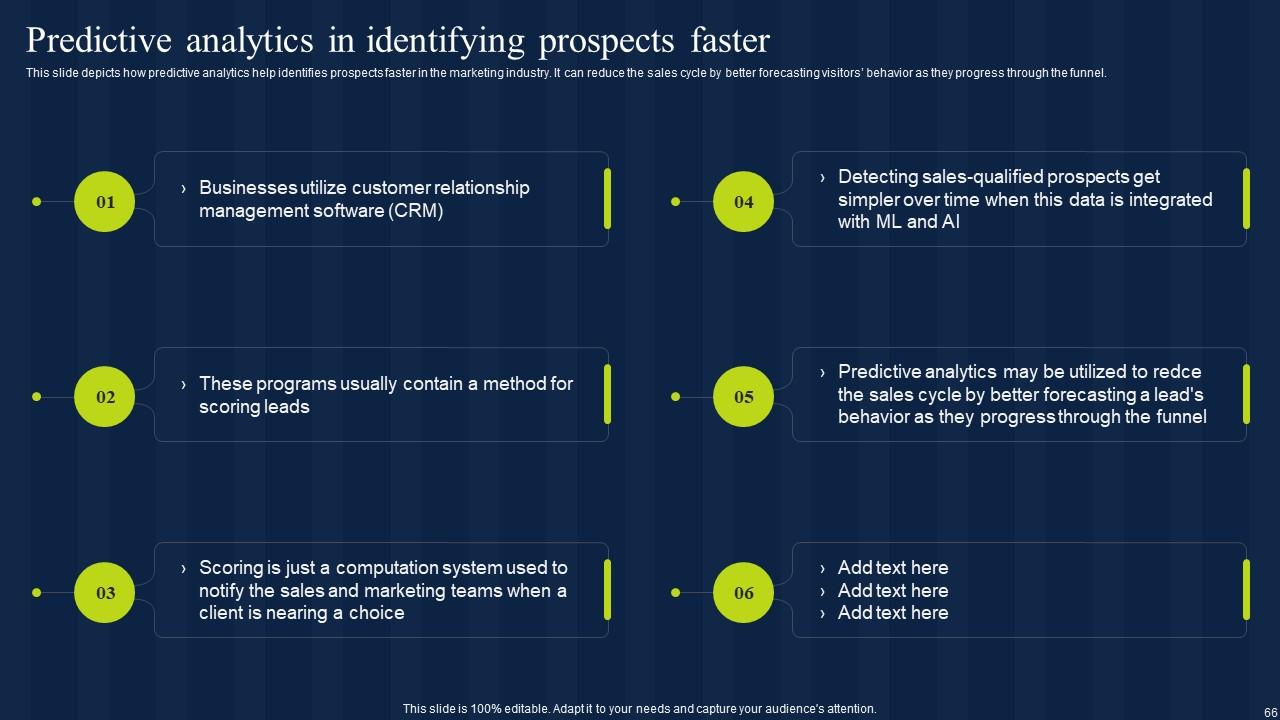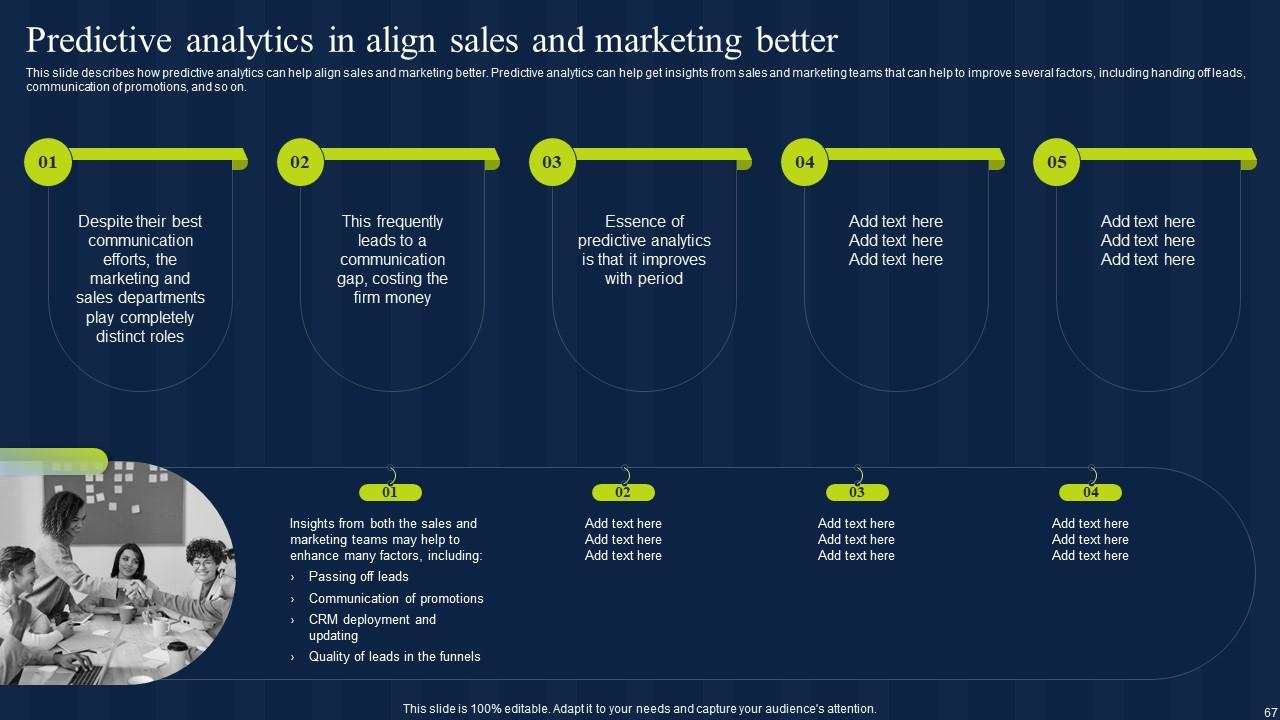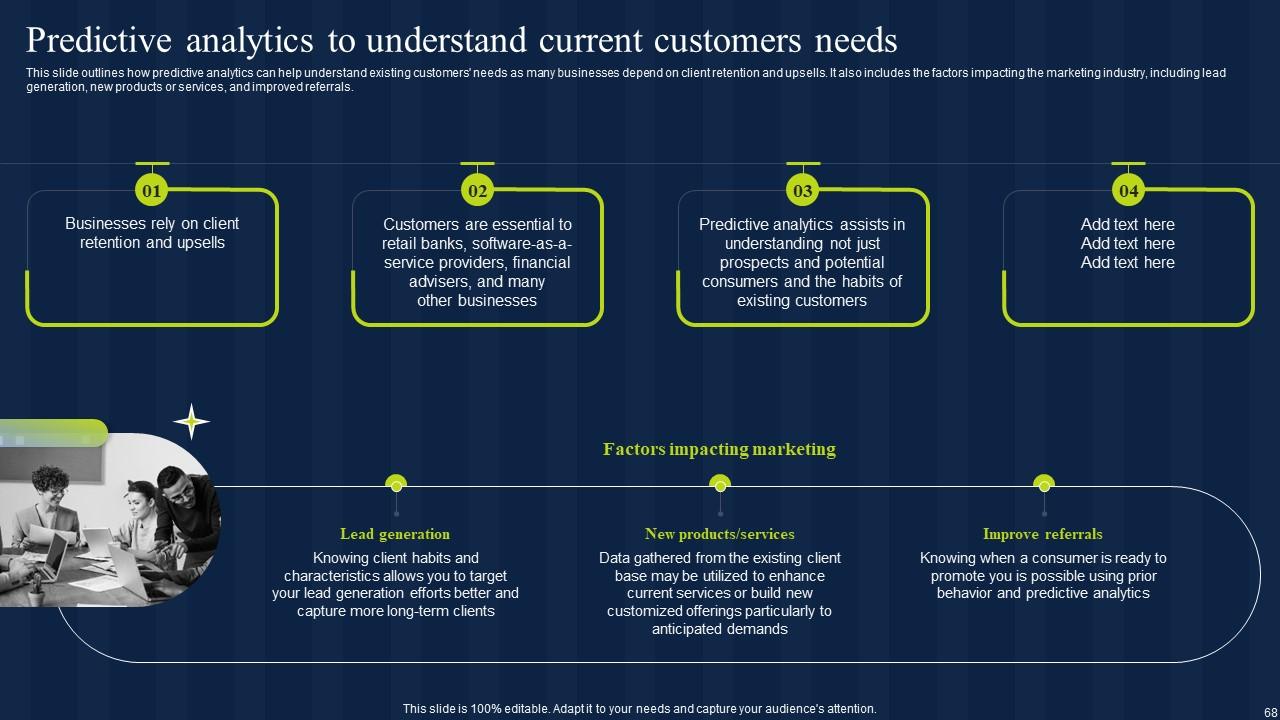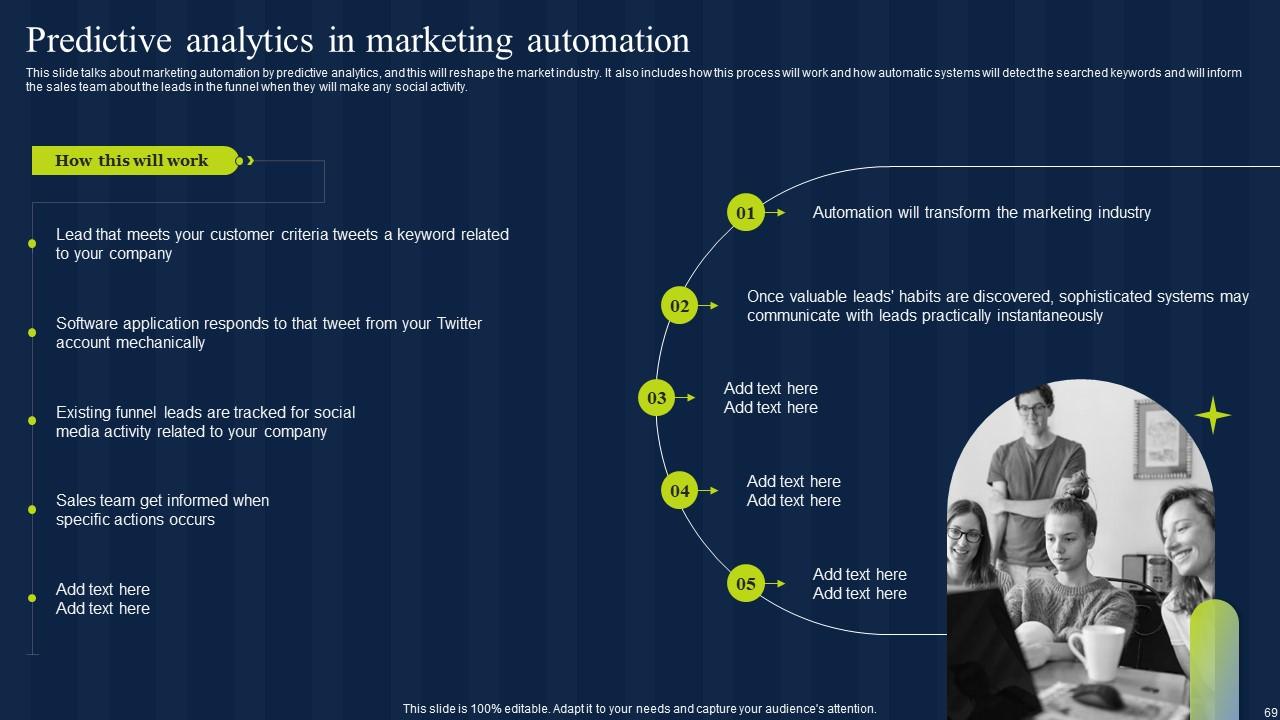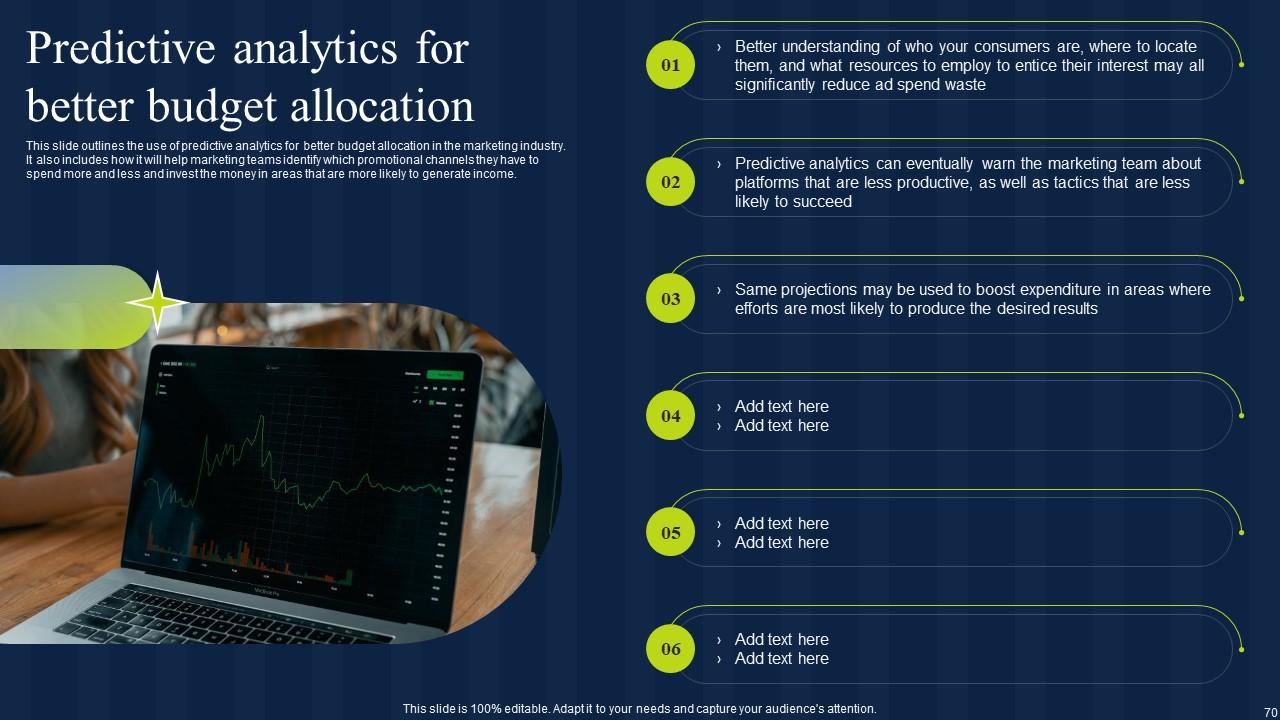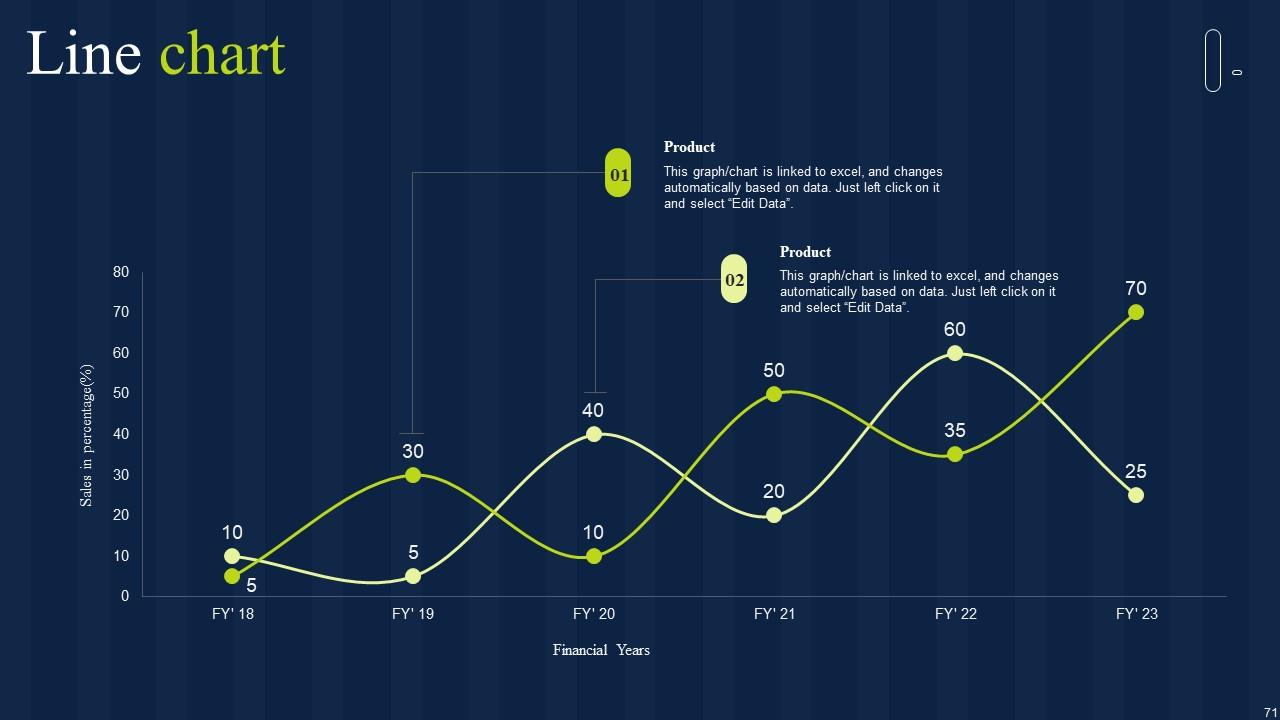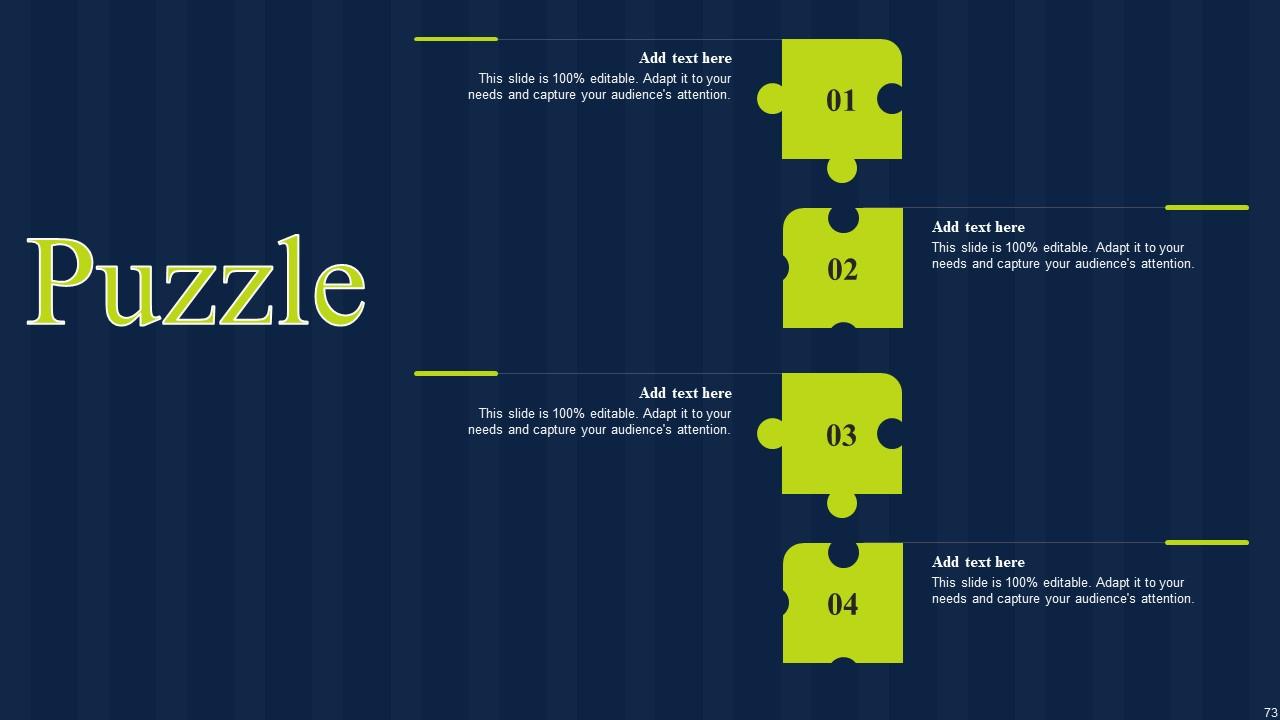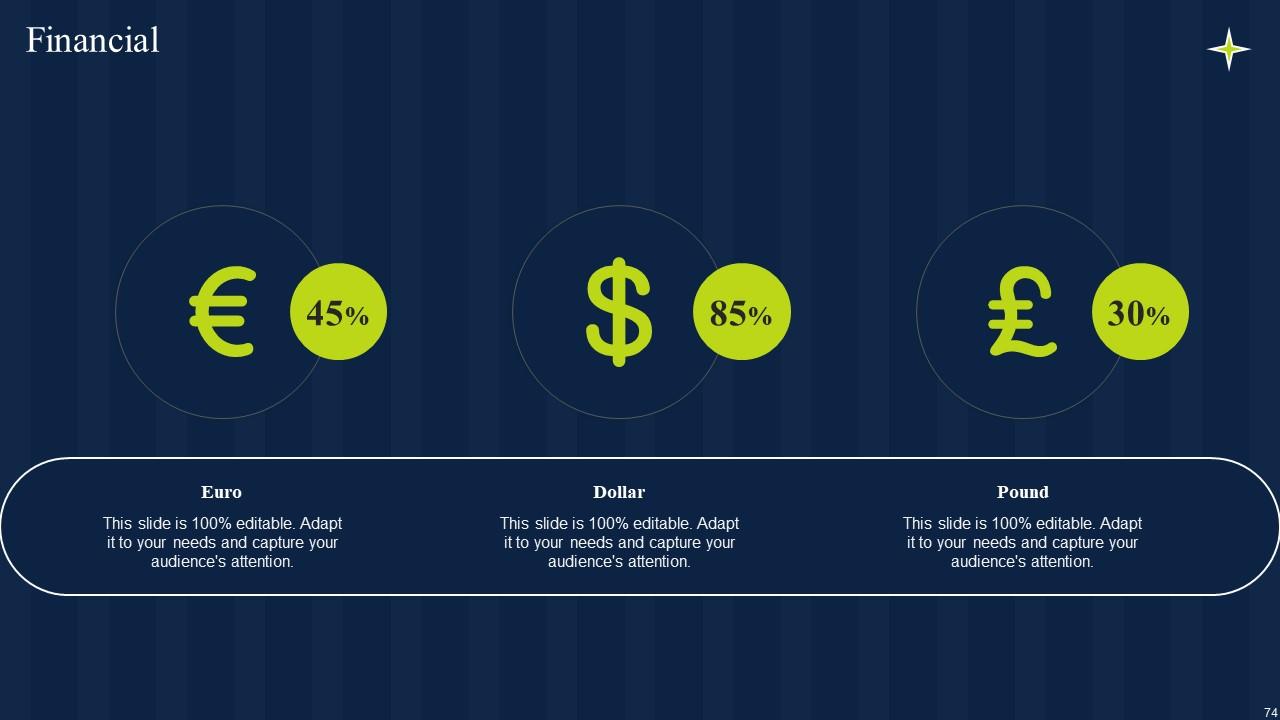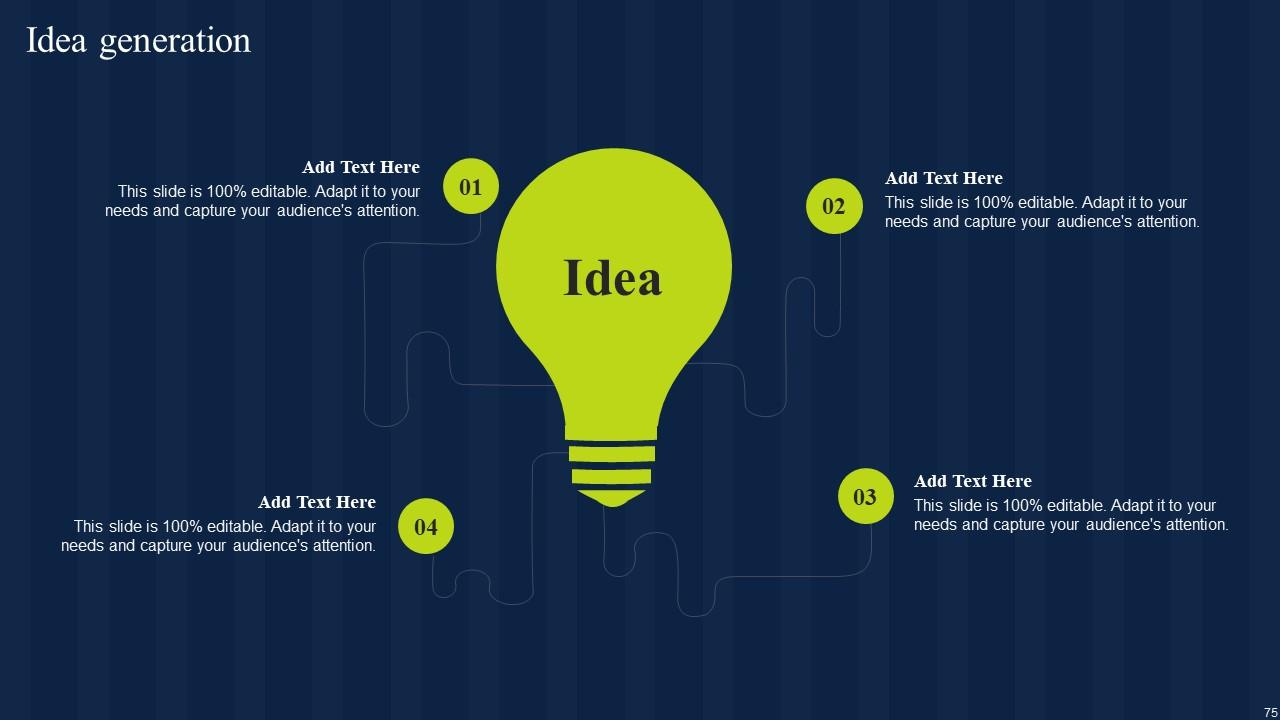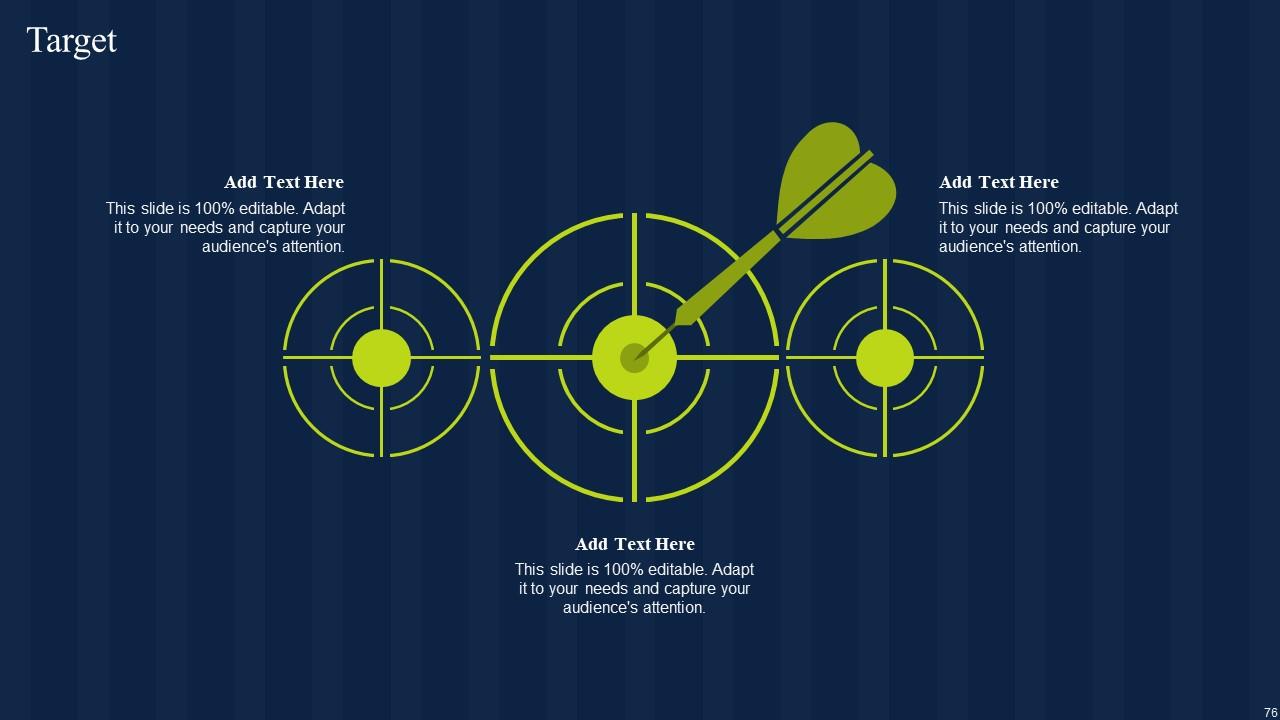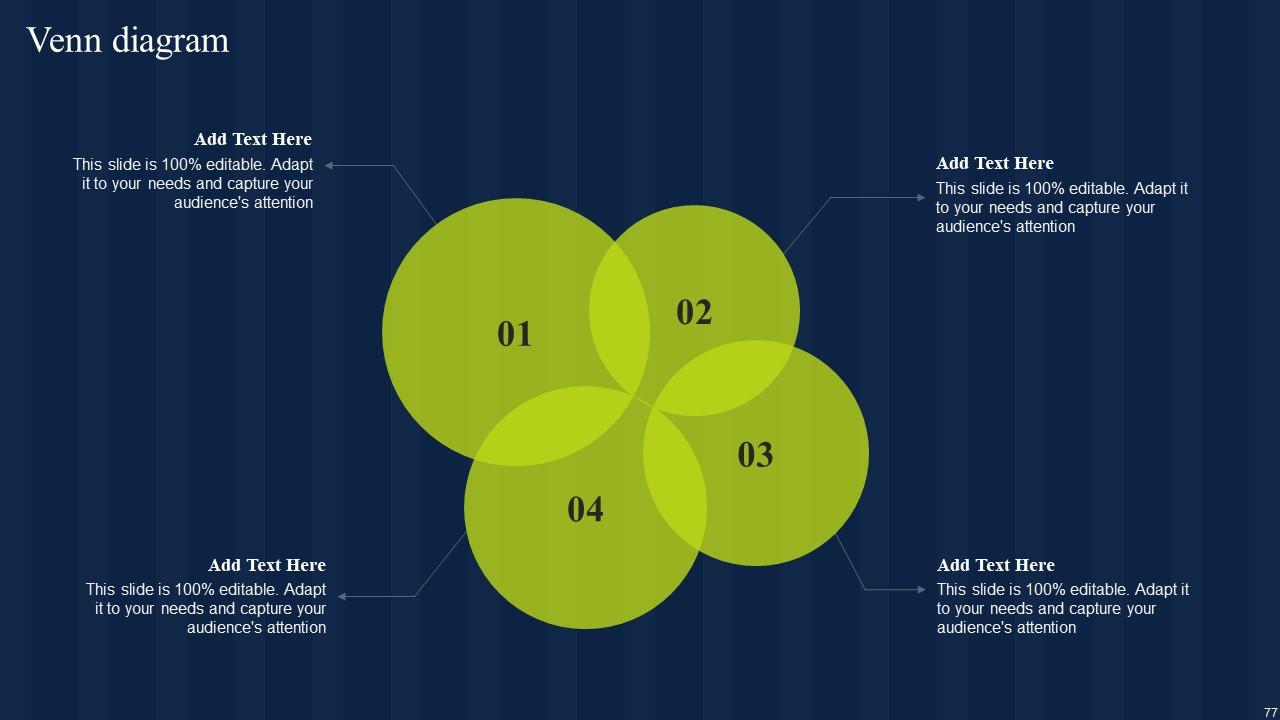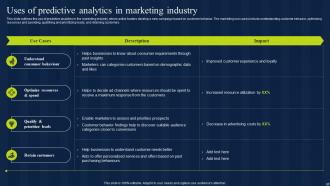Estimation Model IT Powerpoint Presentation Slides V
Predictive analytics is applicable and valuable to nearly every industry. Check out our efficiently designed Estimation Model template. It gives a brief idea about predictive analytics, which uses statistical techniques, machine learning algorithms, and other tools to analyze historical data. It also makes predictions about future events or outcomes. In our Predictive Analytics deck, we have covered the introduction to predictive analytics, its framework, and different models. It shows the importance of predictive analytics with its usage. In addition, our Estimation Model PPT exhibits the different predictive analytics tools and their workflow. Further, it covers the difference between the four types of advanced analytics. Our Forecast Model PPT reveals multiple predictive analytics models like classification models, clustering models, etc. Furthermore, it caters to the prominent business sectors that are already using predictive analytics in their daily operations. These include the healthcare department, banking, finance, and many more. Moreover, this Prospective Analysis module comprises a training program and a budget to develop a predictive analytics model. Lastly, it showcases a checklist, a timeline, and a roadmap for predictive analytics model deployment with a performance tracking dashboard. Get access now.
Predictive analytics is applicable and valuable to nearly every industry. Check out our efficiently designed Estimation Mod..
- Google Slides is a new FREE Presentation software from Google.
- All our content is 100% compatible with Google Slides.
- Just download our designs, and upload them to Google Slides and they will work automatically.
- Amaze your audience with SlideTeam and Google Slides.
-
Want Changes to This PPT Slide? Check out our Presentation Design Services
- WideScreen Aspect ratio is becoming a very popular format. When you download this product, the downloaded ZIP will contain this product in both standard and widescreen format.
-

- Some older products that we have may only be in standard format, but they can easily be converted to widescreen.
- To do this, please open the SlideTeam product in Powerpoint, and go to
- Design ( On the top bar) -> Page Setup -> and select "On-screen Show (16:9)” in the drop down for "Slides Sized for".
- The slide or theme will change to widescreen, and all graphics will adjust automatically. You can similarly convert our content to any other desired screen aspect ratio.
Compatible With Google Slides

Get This In WideScreen
You must be logged in to download this presentation.
PowerPoint presentation slides
Enthrall your audience with this Estimation Model IT Powerpoint Presentation Slides V. Increase your presentation threshold by deploying this well-crafted template. It acts as a great communication tool due to its well-researched content. It also contains stylized icons, graphics, visuals etc, which make it an immediate attention-grabber. Comprising seventy eight slides, this complete deck is all you need to get noticed. All the slides and their content can be altered to suit your unique business setting. Not only that, other components and graphics can also be modified to add personal touches to this prefabricated set.
People who downloaded this PowerPoint presentation also viewed the following :
Content of this Powerpoint Presentation
Slide 1: This slide displays the title Estimation Model (IT).
Slide 2: This slide displays the title Agenda for estimation model.
Slide 3: This slide exhibit table of content.
Slide 4: This slide showcase table of content that is to be discuss further.
Slide 5: This slide showcase table of content that is to be discuss further.
Slide 6: This slide represents the predictive analytics introduction that is used for forecasts action, behaviors, and trends using recent and past information.
Slide 7: This slide outlines the overview of the predictive analytics framework and its components, including wide area network, OpenFlow, forecasting, software-defined.
Slide 8: This slide depicts the overview of predictive analytics models, including the predictive problems they solve.
Slide 9: This slide showcase table of content that is to be discuss further.
Slide 10: This slide depicts the importance of predictive analytics in different industries.
Slide 11: This slide depicts the importance of predictive analytics that covers detecting fraud, improving operations, optimizing marketing campaigns, and reducing risks.
Slide 12: This slide showcase table of content that is to be discuss further.
Slide 13: This slide depicts the tools used for predictive analytics to perform operations in predictive models.
Slide 14: This slide represents the predictive analytics workflow that is widely used in managing energy loads in electric grids.
Slide 15: This slide represents the steps for predictive analytics workflow application in industries.
Slide 16: This slide showcase table of content that is to be discuss further.
Slide 17: This slide represents the difference between the main types of advanced analytics, and it includes diagnostic, descriptive, predictive, and prescriptive analytics.
Slide 18: This slide showcase table of content that is to be discuss further.
Slide 19: This slide describes the overview of the classification model used in predictive analytics, including the questions it answers.
Slide 20: This slide depicts the decision tree model of predictive analytics that are beneficial for quick decision-making and consists of decision node and leaf nodes.
Slide 21: This slide represents the random forest technique to implement a classification model that simultaneously works on individual subsets of sample data.
Slide 22: This slide showcase table of content that is to be discuss further.
Slide 23: This slide represents the overview of the clustering model of predictive analytics covering its two methods such as hard clustering and soft clustering.
Slide 24: This slide outlines the two primary information clustering methods used in the predictive analytics clustering model.
Slide 25: This slide showcase table of content that is to be discuss further.
Slide 26: This slide represents the regression model of predictive analytics that is most commonly used in statistical analysis.
Slide 27: This slide represents the types of the regression model, including its overview, examples, and usage percentage.
Slide 28: This slide showcase table of content that is to be discuss further.
Slide 29: This slide depicts the neural networks model of predictive analytics that behave in the same manner as a human brain does.
Slide 30: This slide depicts the different types of the neural network model, including their overview, use cases and usage.
Slide 31: This slide showcase table of content that is to be discuss further.
Slide 32: This slide outlines the introduction of the forecast model used for predictive analytics to make the metric value predictions for business processes.
Slide 33: This slide talks about the outliers model used for predictive analytics, including its use cases, impact and algorithm used in it.
Slide 34: This slide talks about the time series model of predictive analytics that makes future outcome predictions by taking time as input.
Slide 35: This slide showcase table of content that is to be discuss further.
Slide 36: This slide discusses the steps required to create predictive algorithm models for business processes.
Slide 37: This slide depicts the lifecycle of the predictive analytics model, and it includes highlighting & formulating a problem, data preparation, information exploration.
Slide 38: This slide depicts the working of predictive analytics models that operates iteratively.
Slide 39: This slide represents the development process of predictive analytics that uses recent and past information to predict behavior, actions, and trends.
Slide 40: This slide showcase table of content that is to be discuss further.
Slide 41: This slide outlines the application of predictive analytics in the healthcare department for forecasting the probability of patients having medical disorders.
Slide 42: This slide represents the application of predictive analytics in the finance and banking sector as they deal with vast amounts of data.
Slide 43: This slide talks about using predictive analytics in manufacturing forecasting for optimal use of resources.
Slide 44: This slide depicts the usage of predictive analytics technology in the government sector to improve cybersecurity.
Slide 45: This slide represents the application of predictive analytics technology in the retail industry in customer behavior analysis, improved customer service.
Slide 46: This slide outlines the use of predictive analytics in the marketing industry, where active traders develop a new campaign based on customer behavior.
Slide 47: This slide showcase table of content that is to be discuss further.
Slide 48: This slide represents the training program for the predictive analytics model, and it includes the name of teams, trainer names, modules to be covered in training.
Slide 49: This slide describes the budget for developing predictive analytics model by covering details of project cost summary, amount, project details.
Slide 50: This slide showcase table of content that is to be discuss further.
Slide 51: This slide talks about the checklist for predictive analytics deployment that is necessary for organizations before deploying it and avoiding possible mistakes.
Slide 52: This slide showcase table of content that is to be discuss further.
Slide 53: This slide depicts the roadmap for predictive analytics model development, including describing the project, information collection, information analysis.
Slide 54: This slide showcase table of content that is to be discuss further.
Slide 55: This slide represents the roadmap for predictive analytics model development, including the steps to be performed in the process.
Slide 56: This slide showcase table of content that is to be discuss further.
Slide 57: This slide represents the predictive analytics model performance tracking dashboard.
Slide 58: This is the icons slide.
Slide 59: This slide presents title for additional slides.
Slide 60: This slide describes the usage of predictive analytics in banking and other financial institutions for credit purposes.
Slide 61: This slide represents the application of predictive analytics in underwriting by insurance companies.
Slide 62: This slide represents the application of predictive analytics in fraud detection in various industries.
Slide 63: This slide represents the predictive analytics application in predictive maintenance and monitoring to avoid difficulties later.
Slide 64: This slide represents the comparison between predictive analytics and machine learning based on technology used.
Slide 65: This slide represents how predictive analytics can help the marketing industry find better customer leads.
Slide 66: This slide depicts how predictive analytics help identifies prospects faster in the marketing industry.
Slide 67: This slide describes how predictive analytics can help align sales and marketing better.
Slide 68: This slide outlines how predictive analytics can help understand existing customers' needs as many businesses depend on client retention and upsells.
Slide 69: This slide talks about marketing automation by predictive analytics, and this will reshape the market industry.
Slide 70: This slide outlines the use of predictive analytics for better budget allocation in the marketing industry.
Slide 71: This slide exhibits yearly profits stacked line charts for different products.
Slide 72: This slide depicts posts for past experiences of clients.
Slide 73: This slide shows puzzle for displaying elements of company.
Slide 74: This slide showcases financials of company.
Slide 75: This slide exhibits ideas generated.
Slide 76: This slide shows about your company, target audience and its client's values.
Slide 77: This slide display Venn diagram.
Slide 78: This slide shows about your company, target audience and its client's values.
Estimation Model IT Powerpoint Presentation Slides V with all 83 slides:
Use our Estimation Model IT Powerpoint Presentation Slides V to effectively help you save your valuable time. They are readymade to fit into any presentation structure.
-
I am glad to have come across Slideteam. I was searching for some unique presentations and templates for my business. There are a lot of alternatives available here.
-
I am so thankful for all of the templates I've found on your site. They have saved me hours every week and helped make my presentations come alive. Keep up with these amazing product releases!


